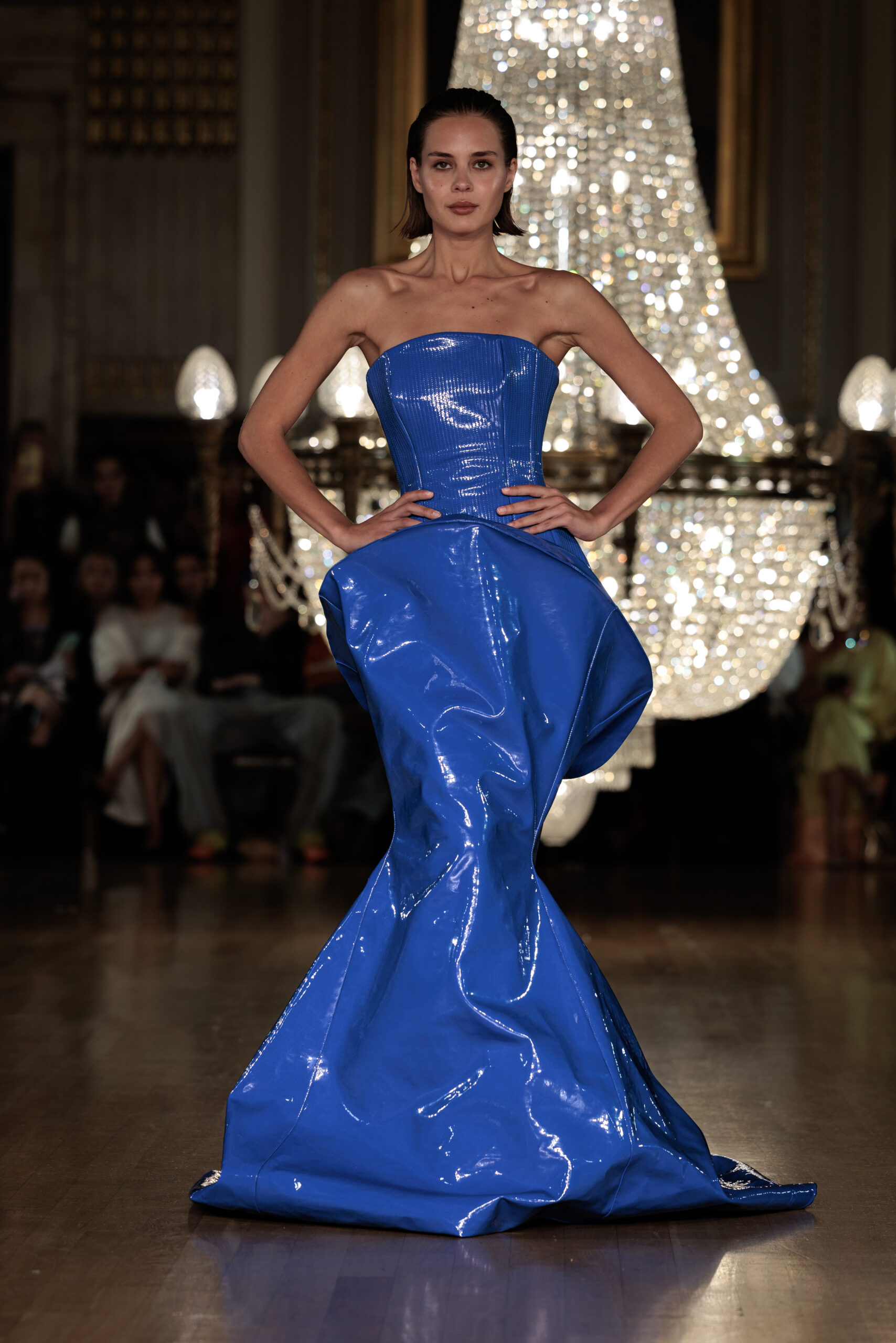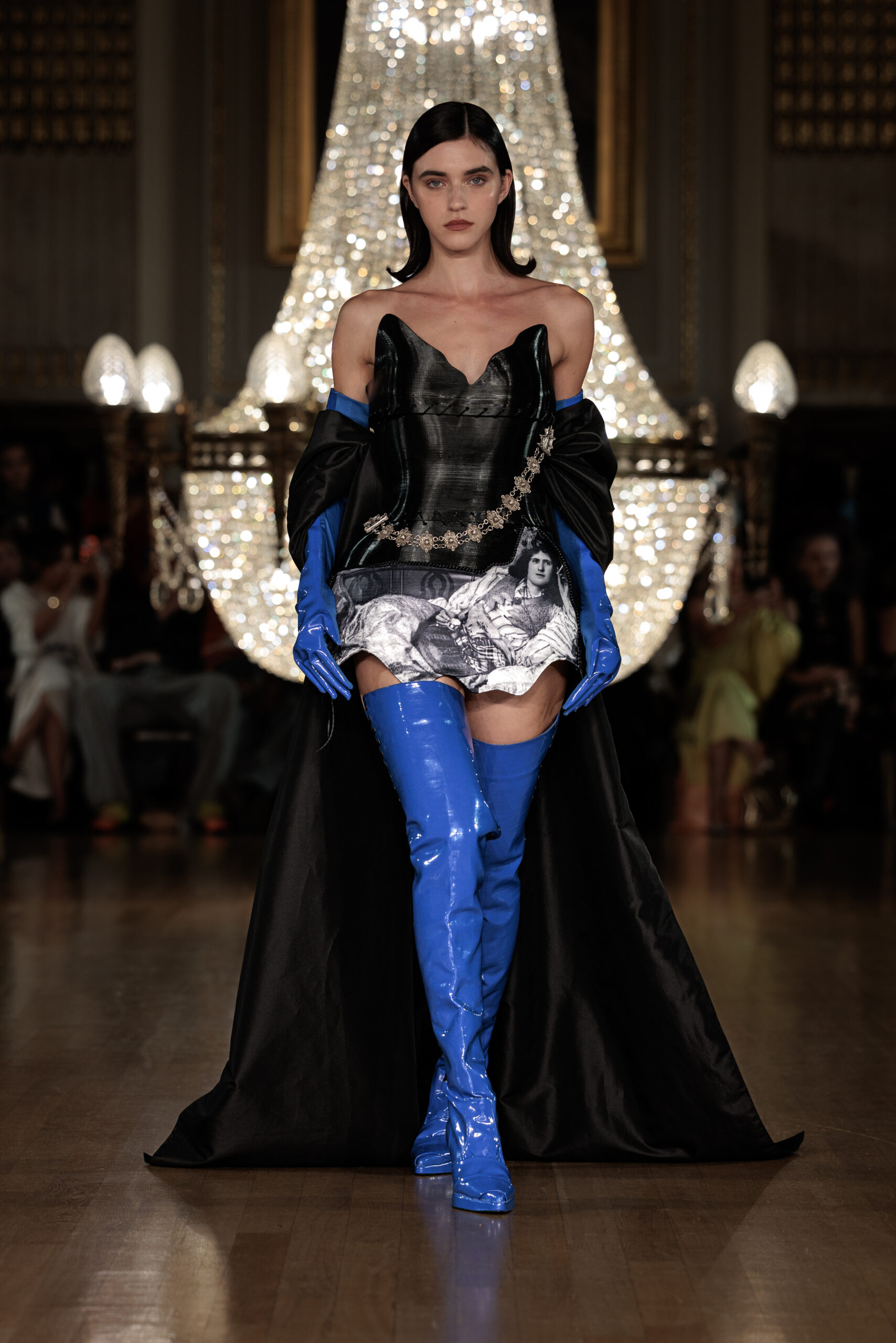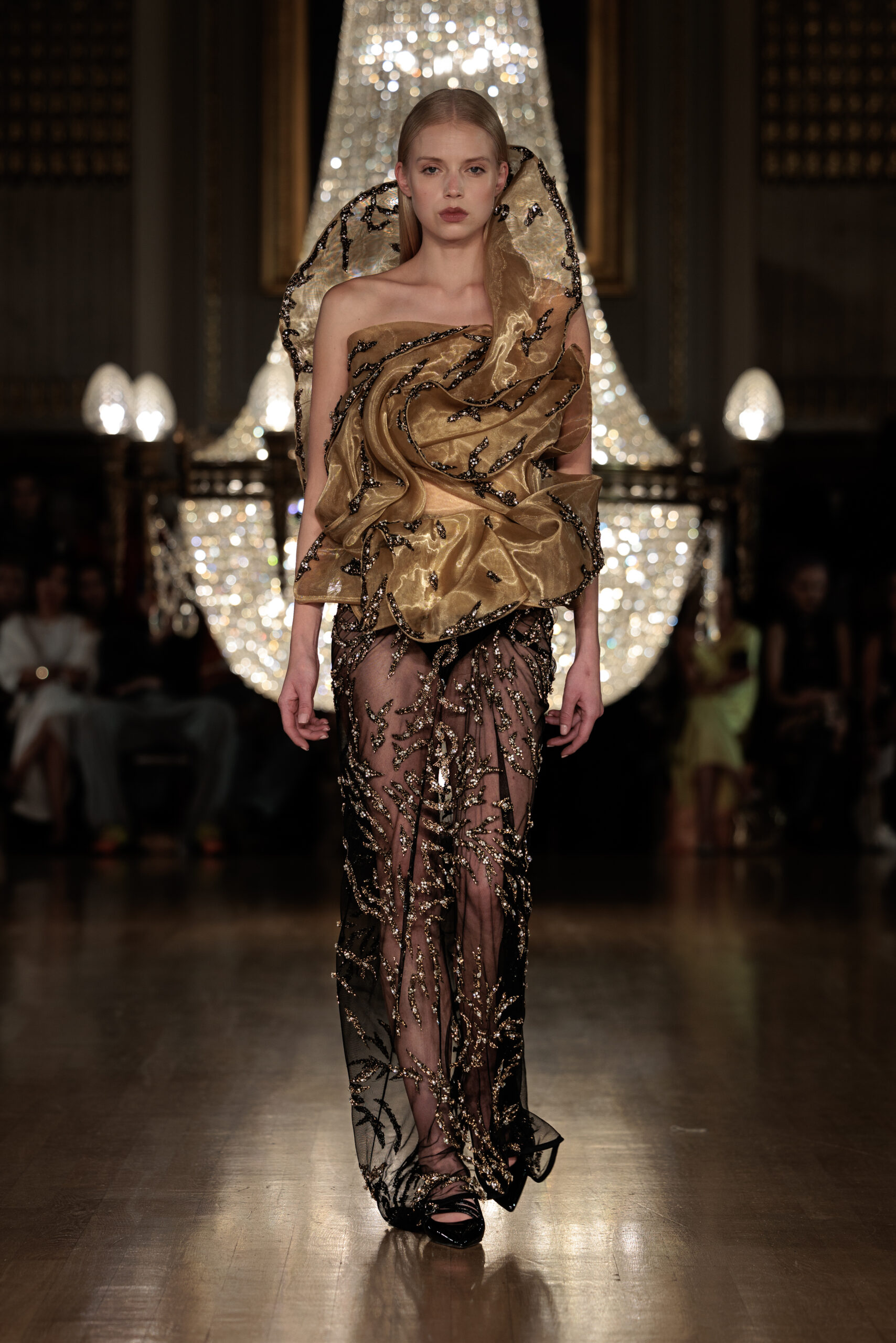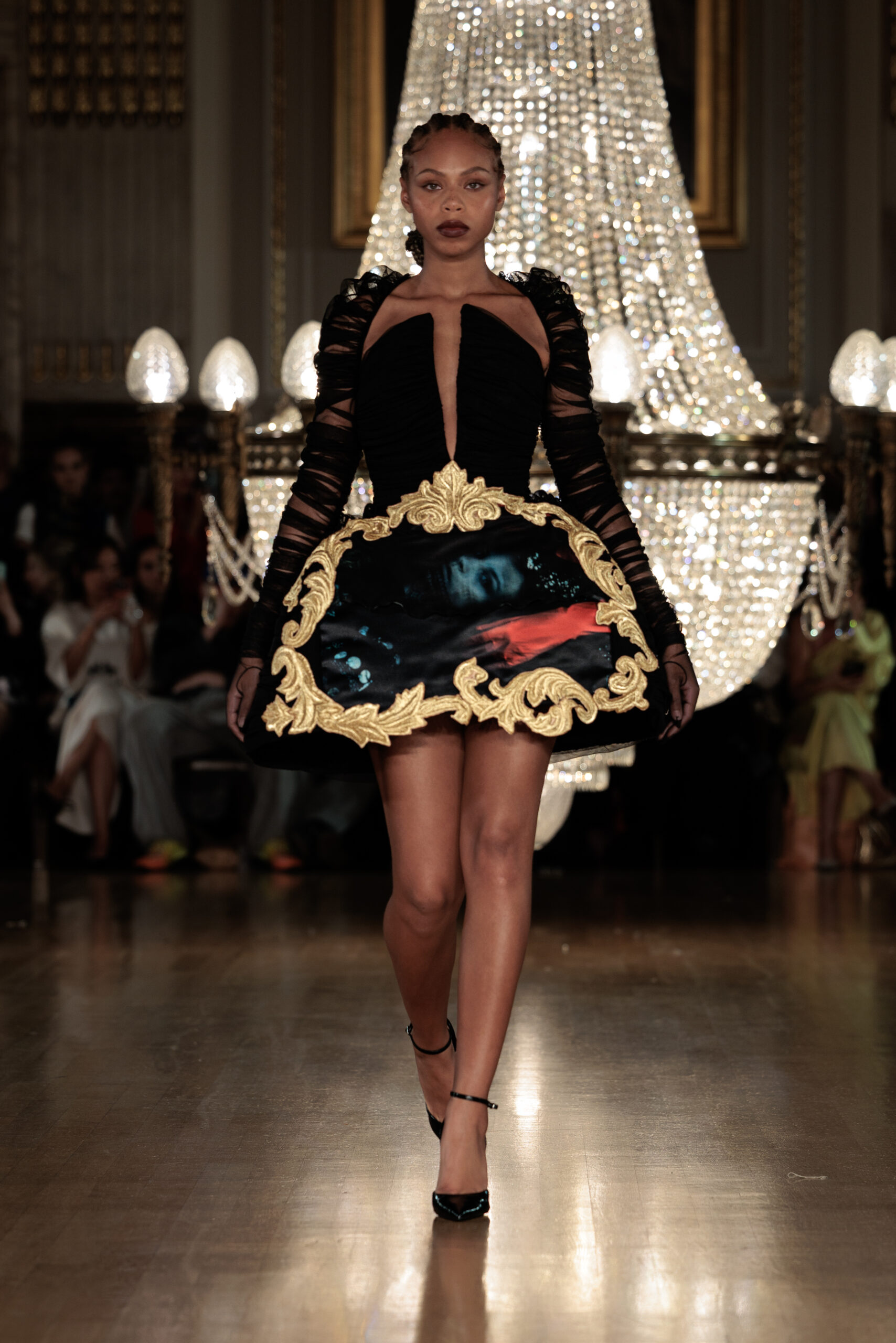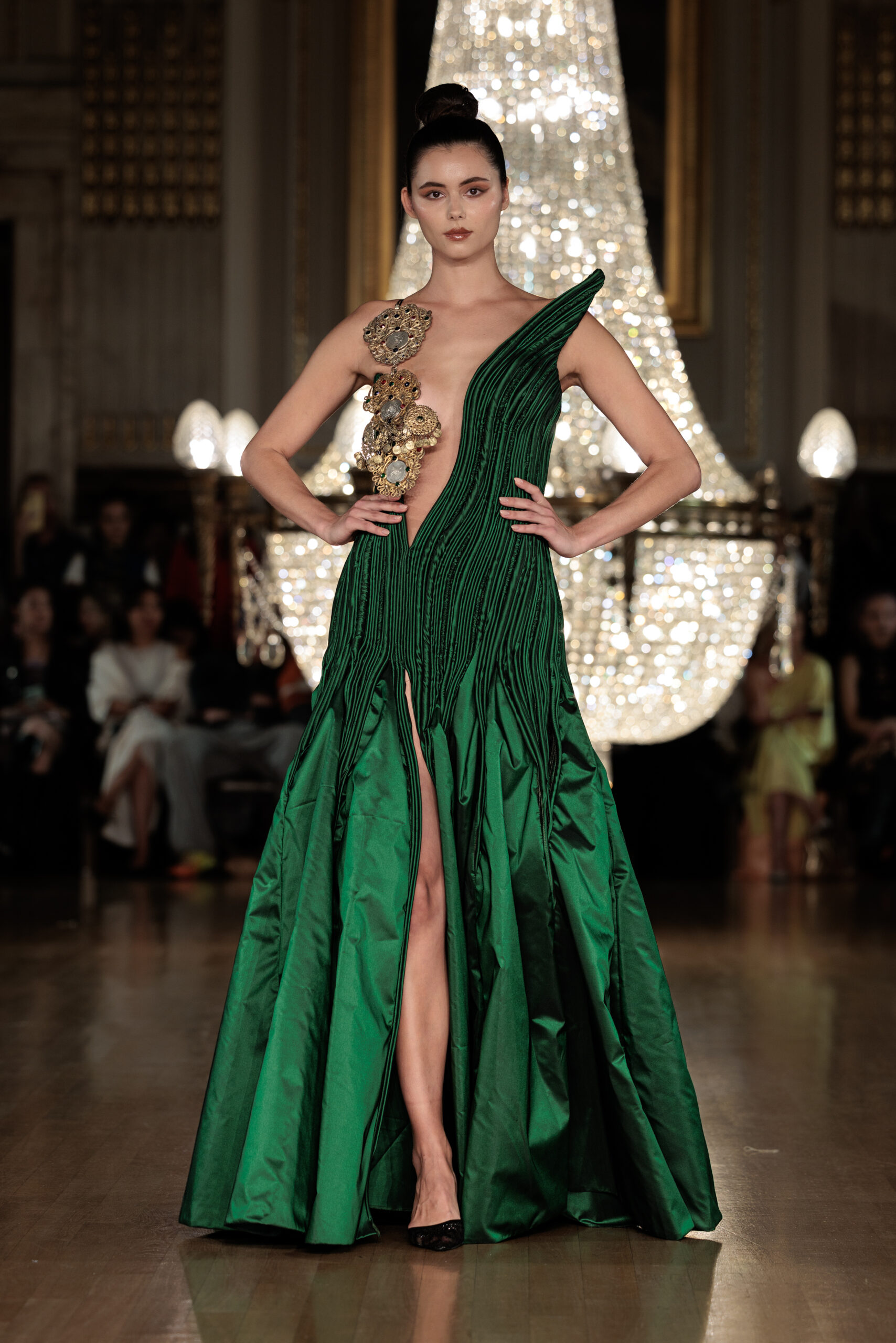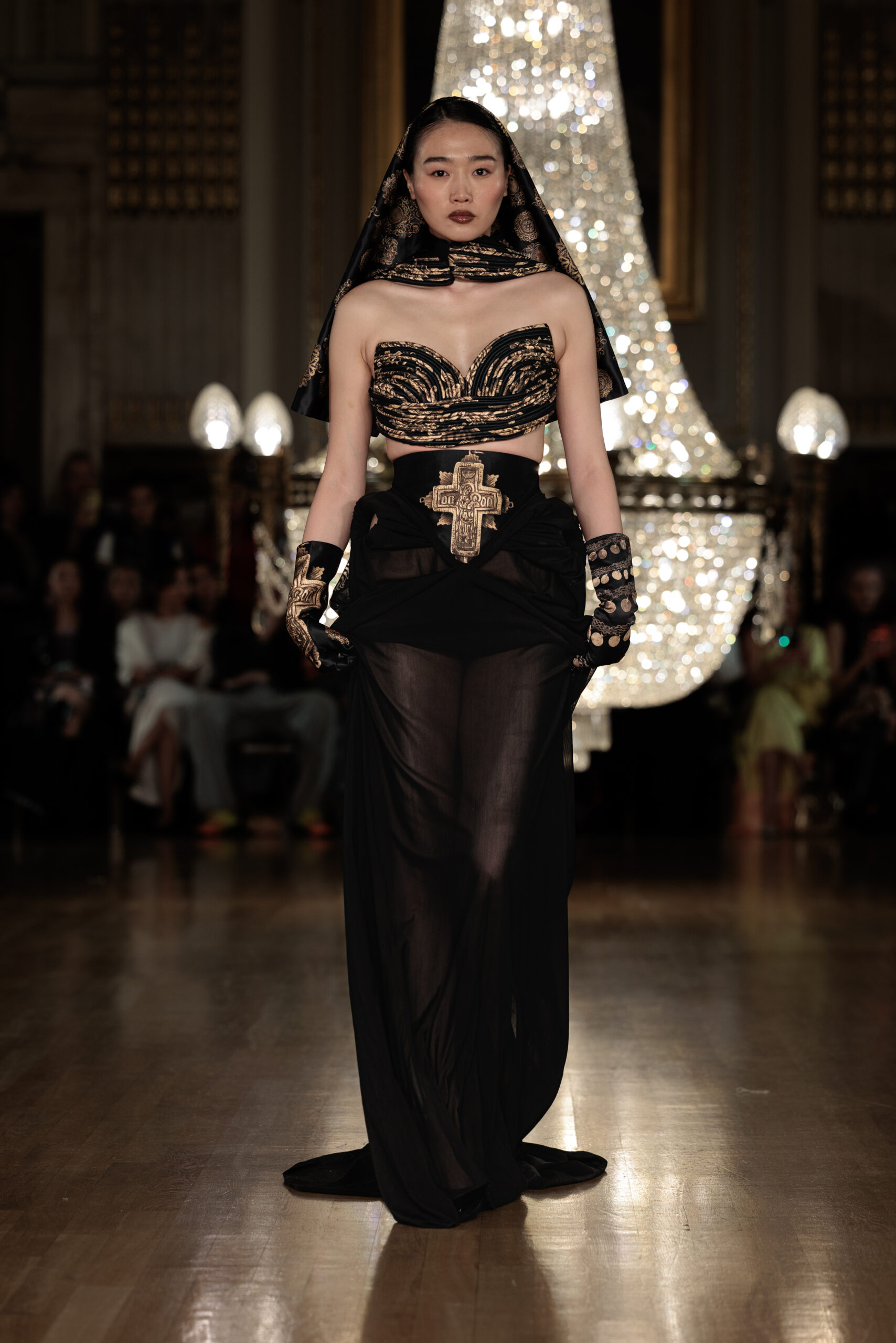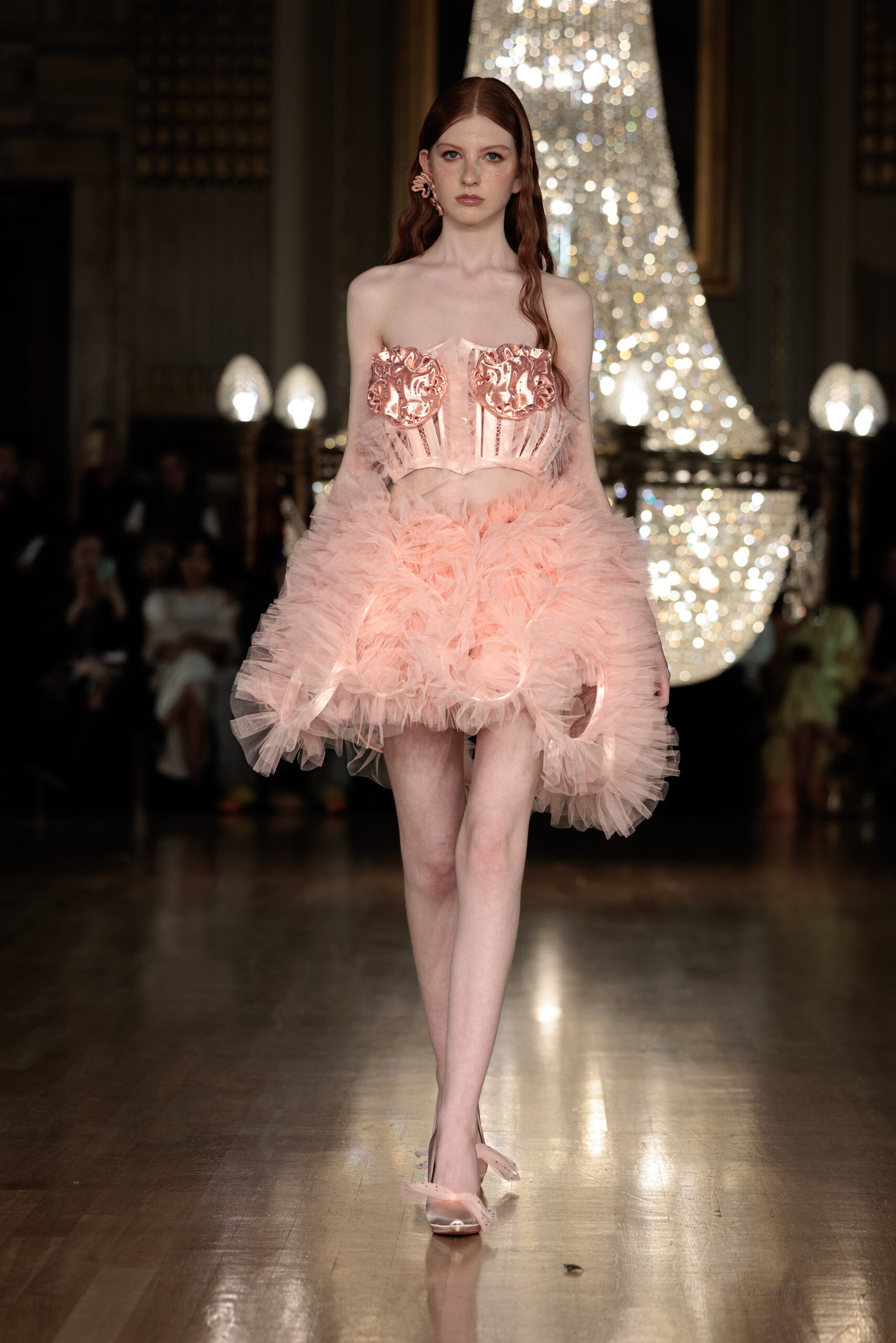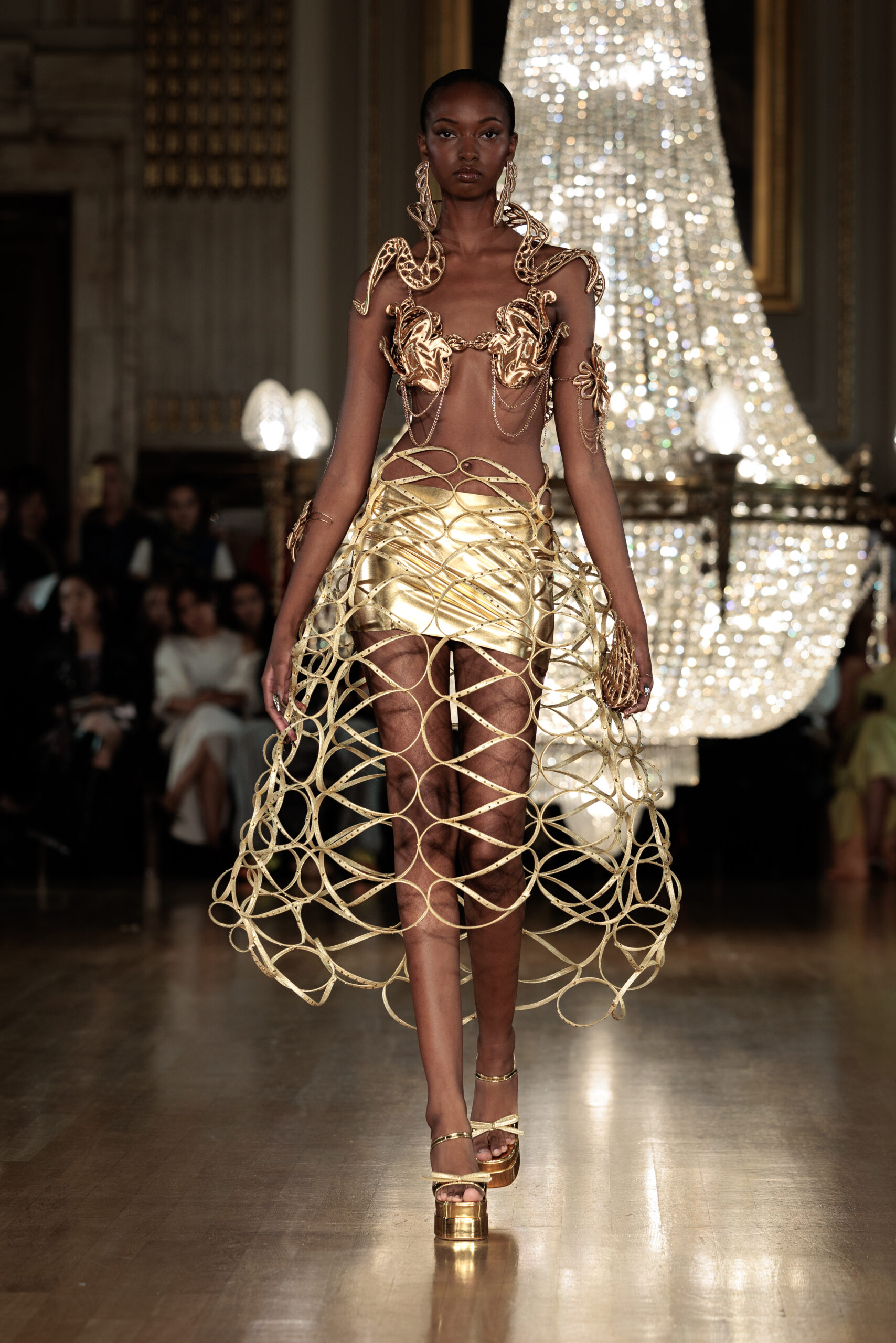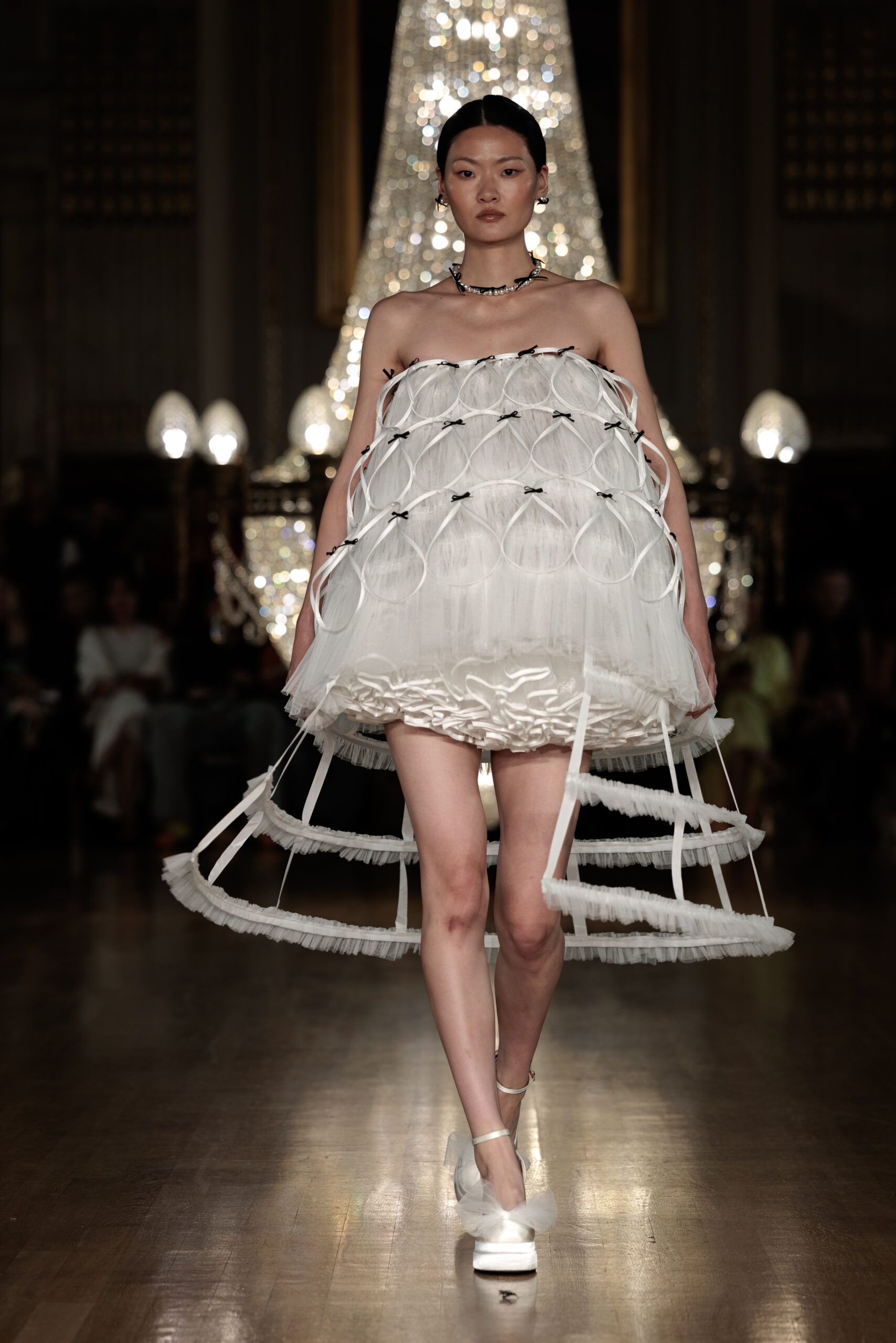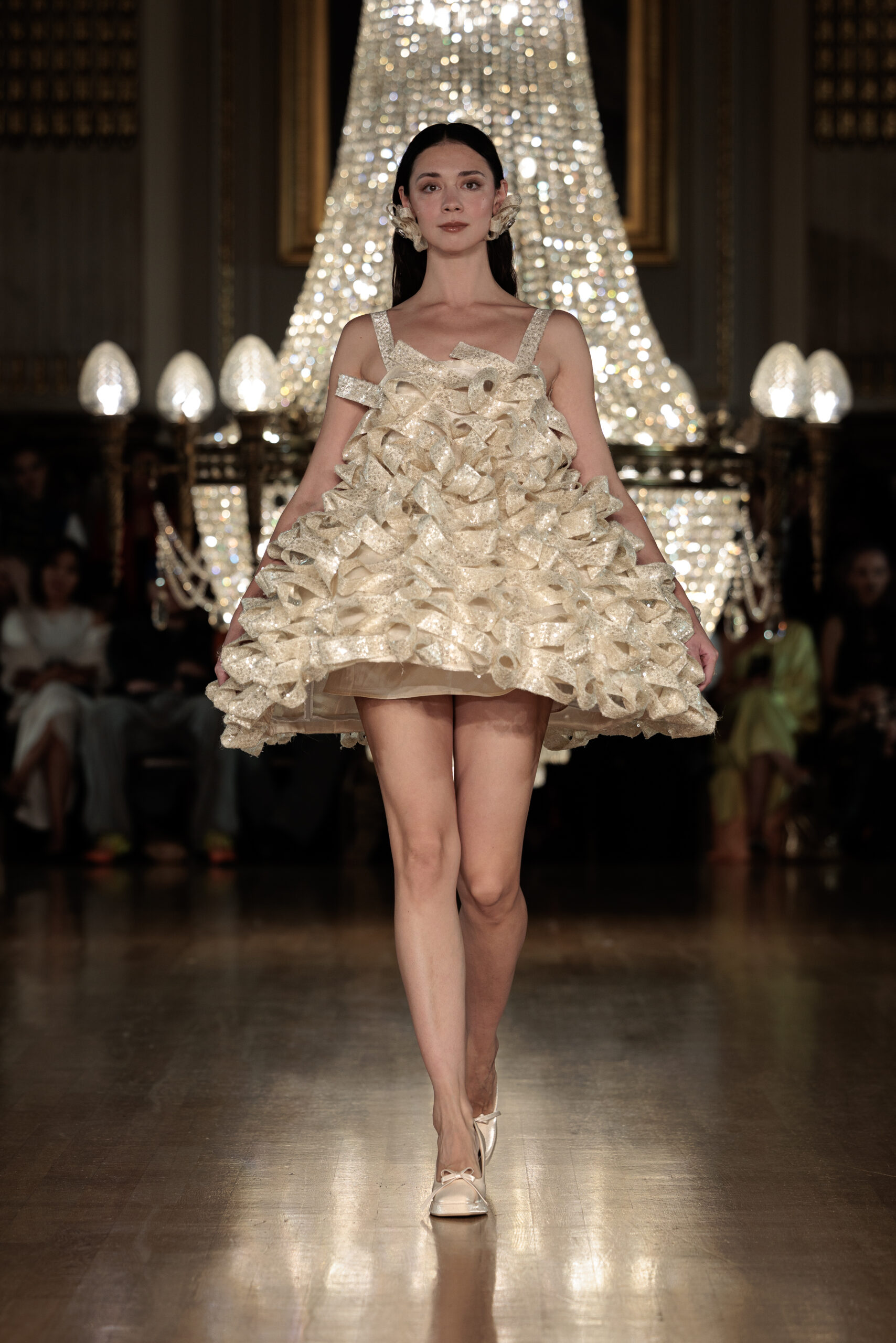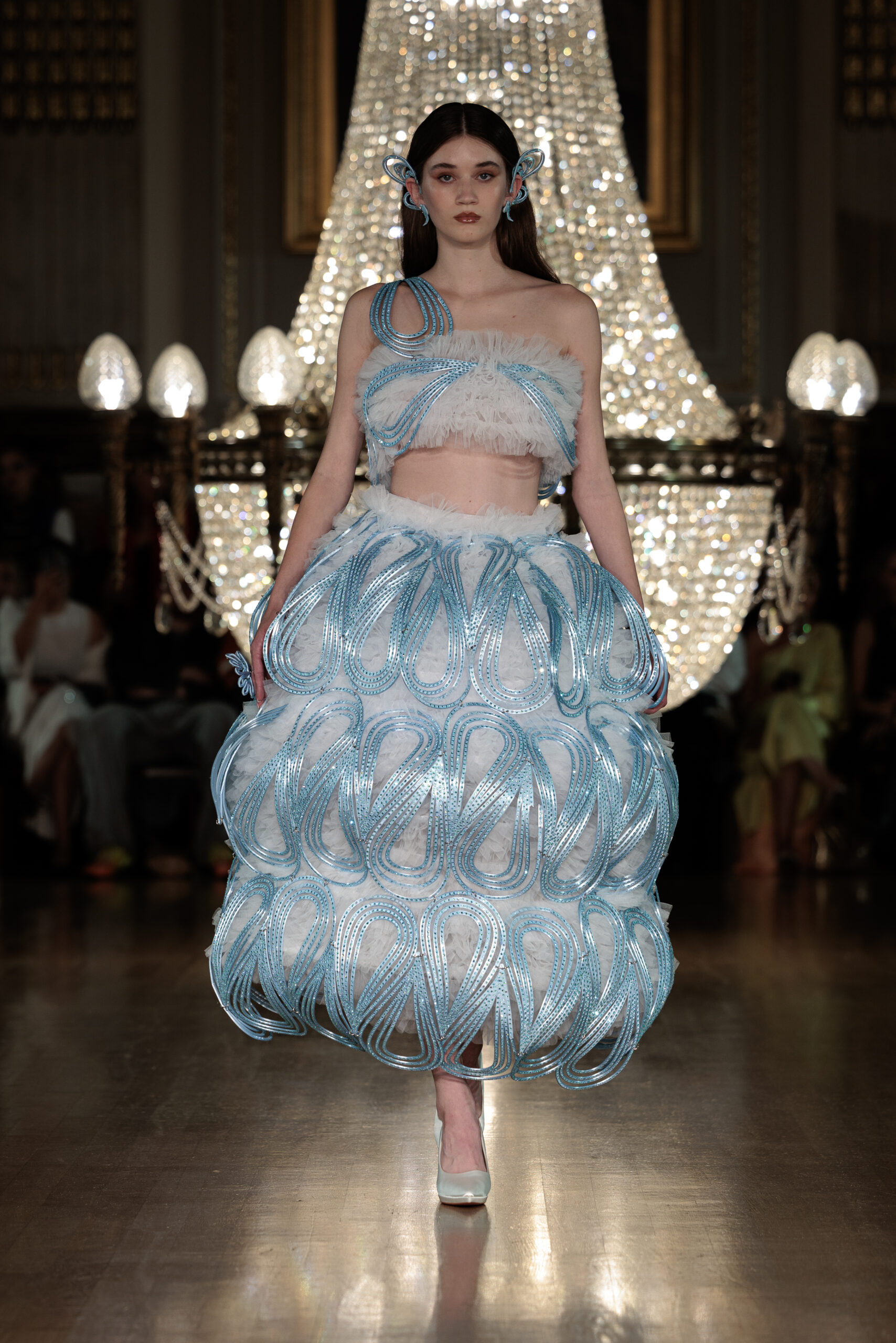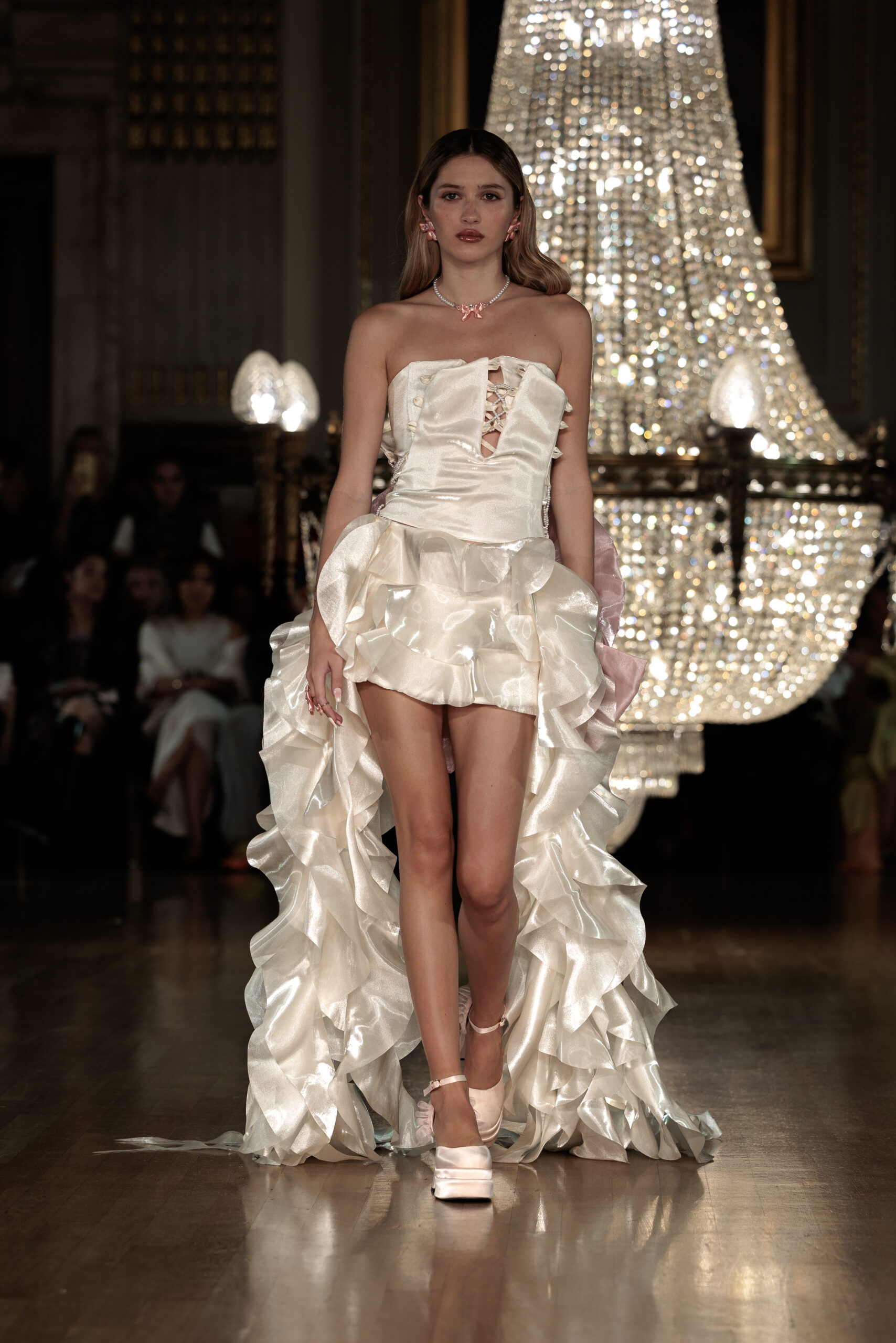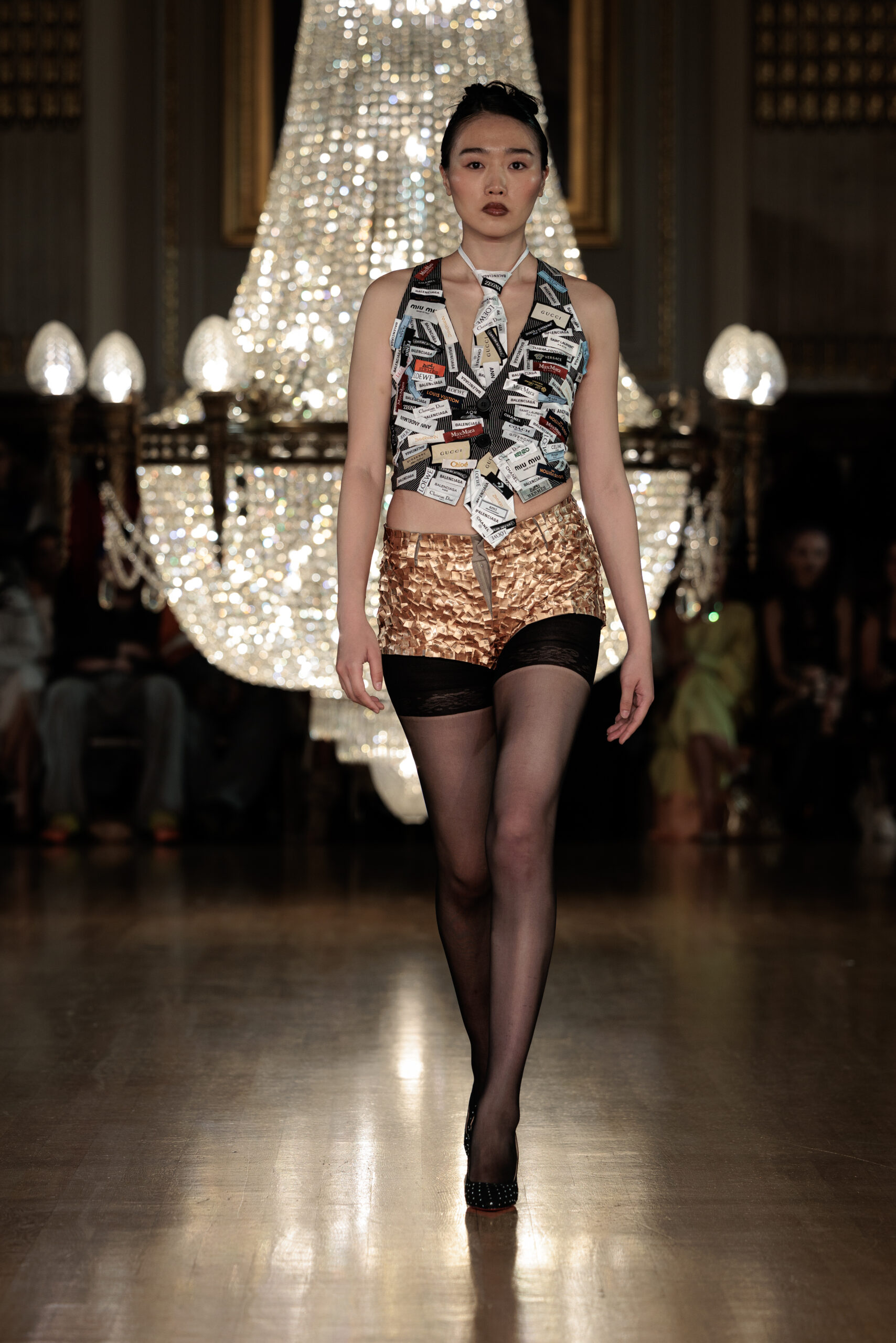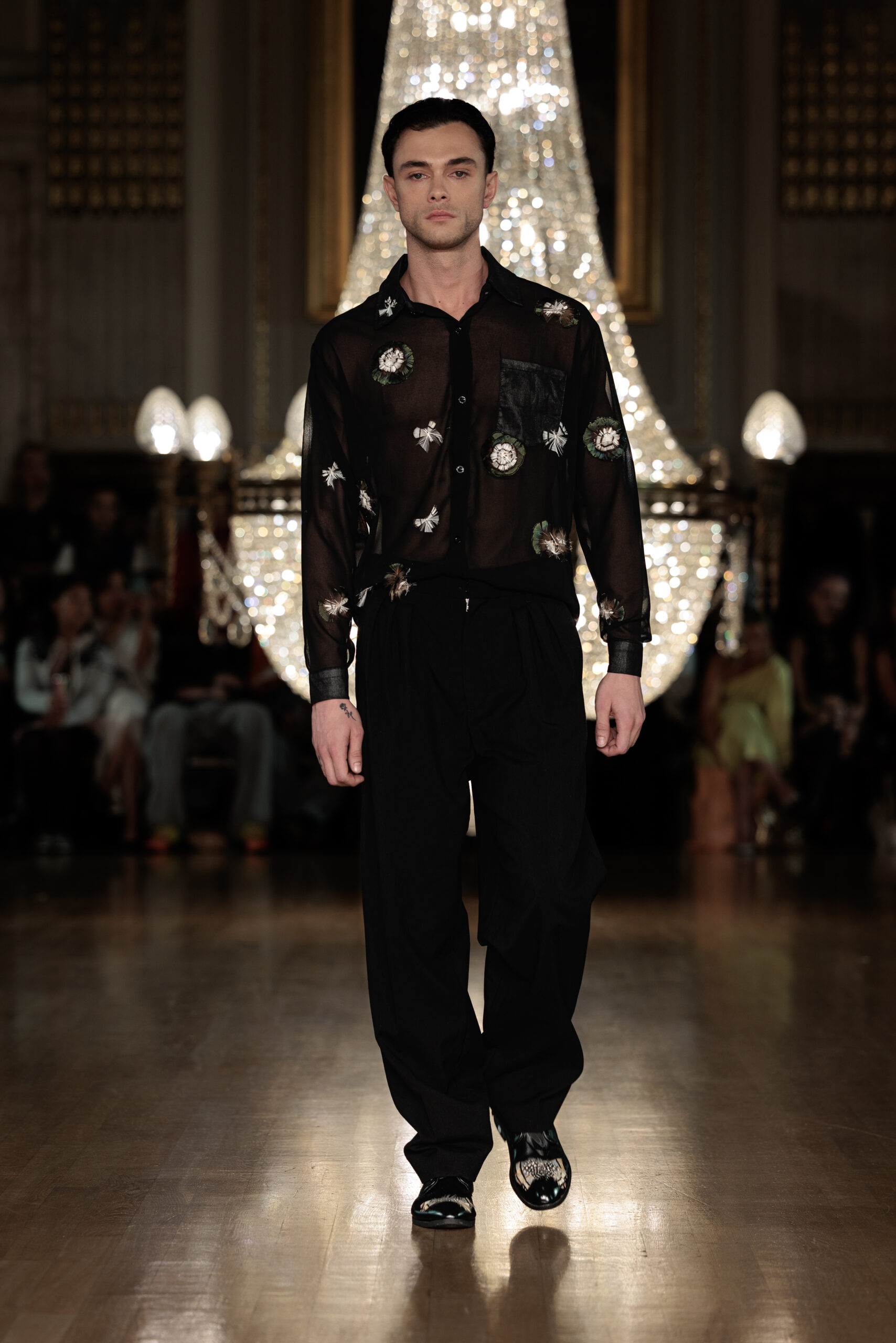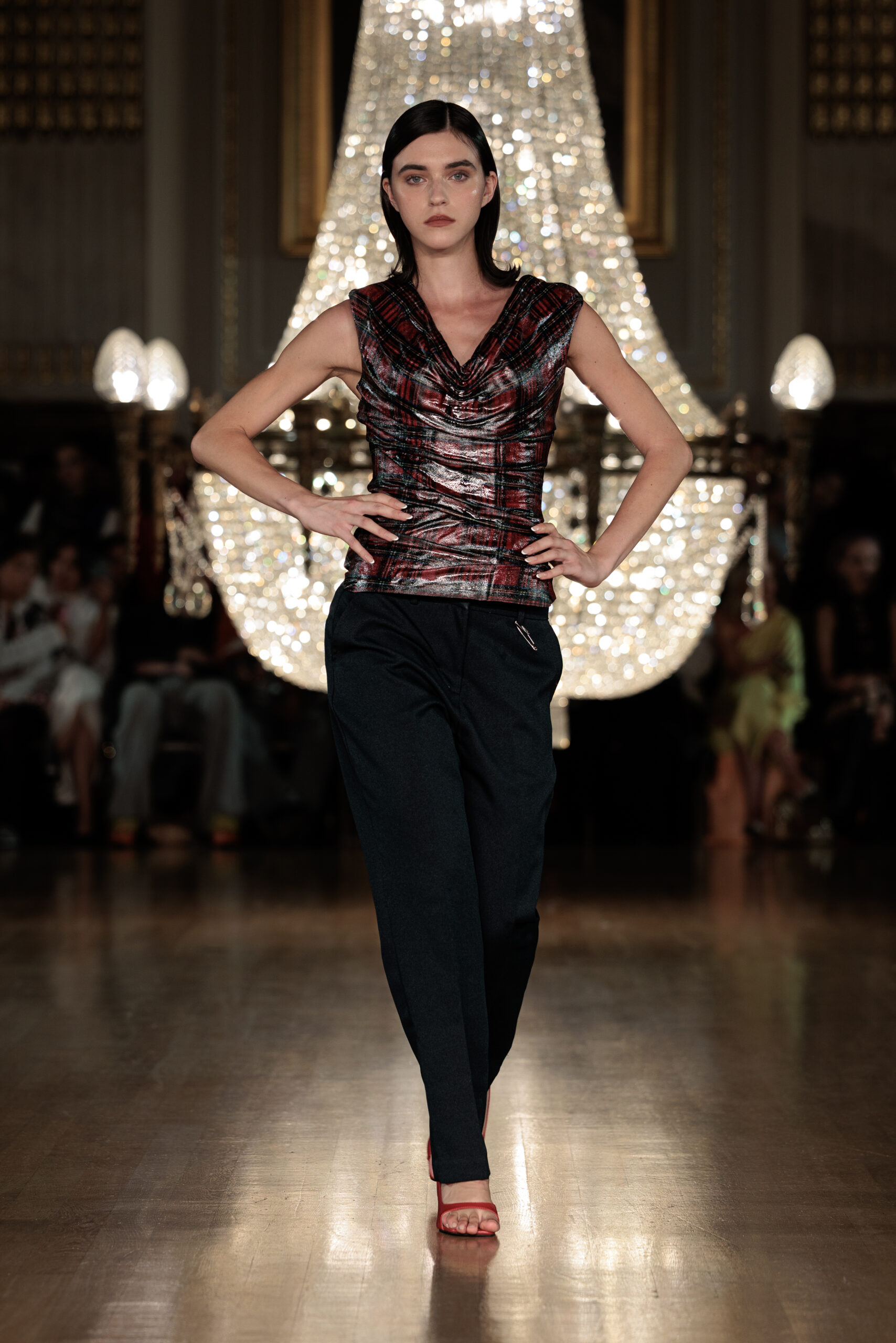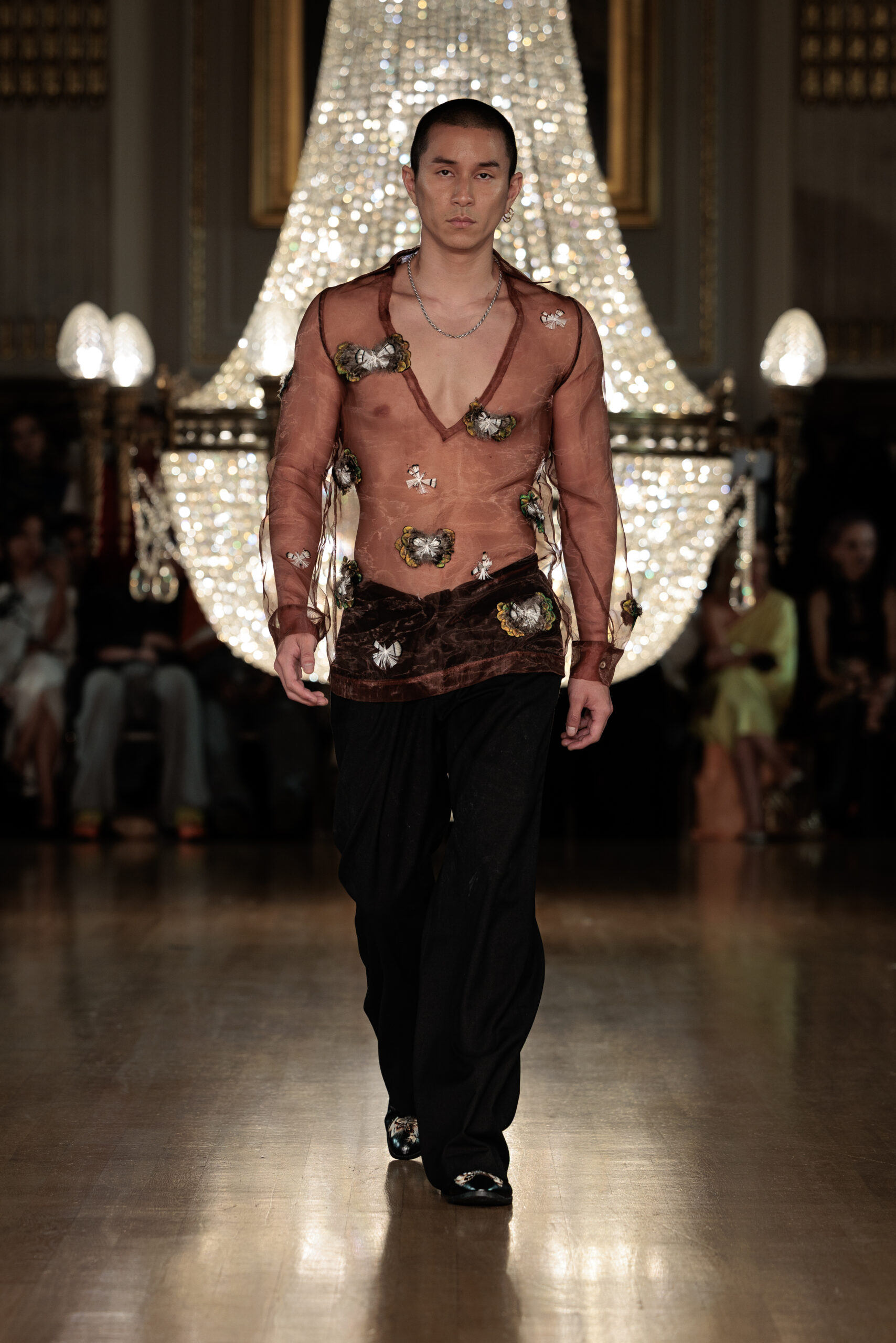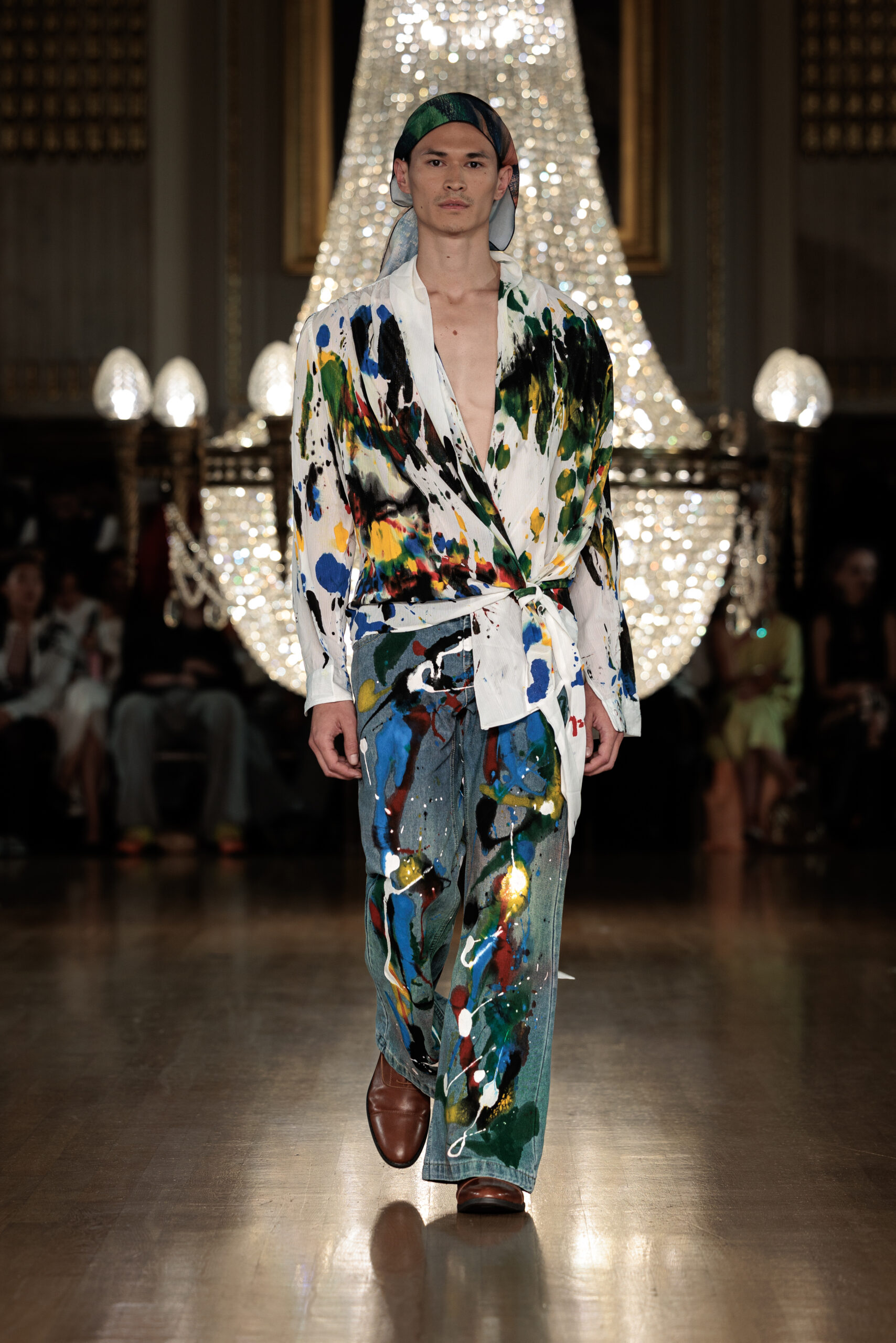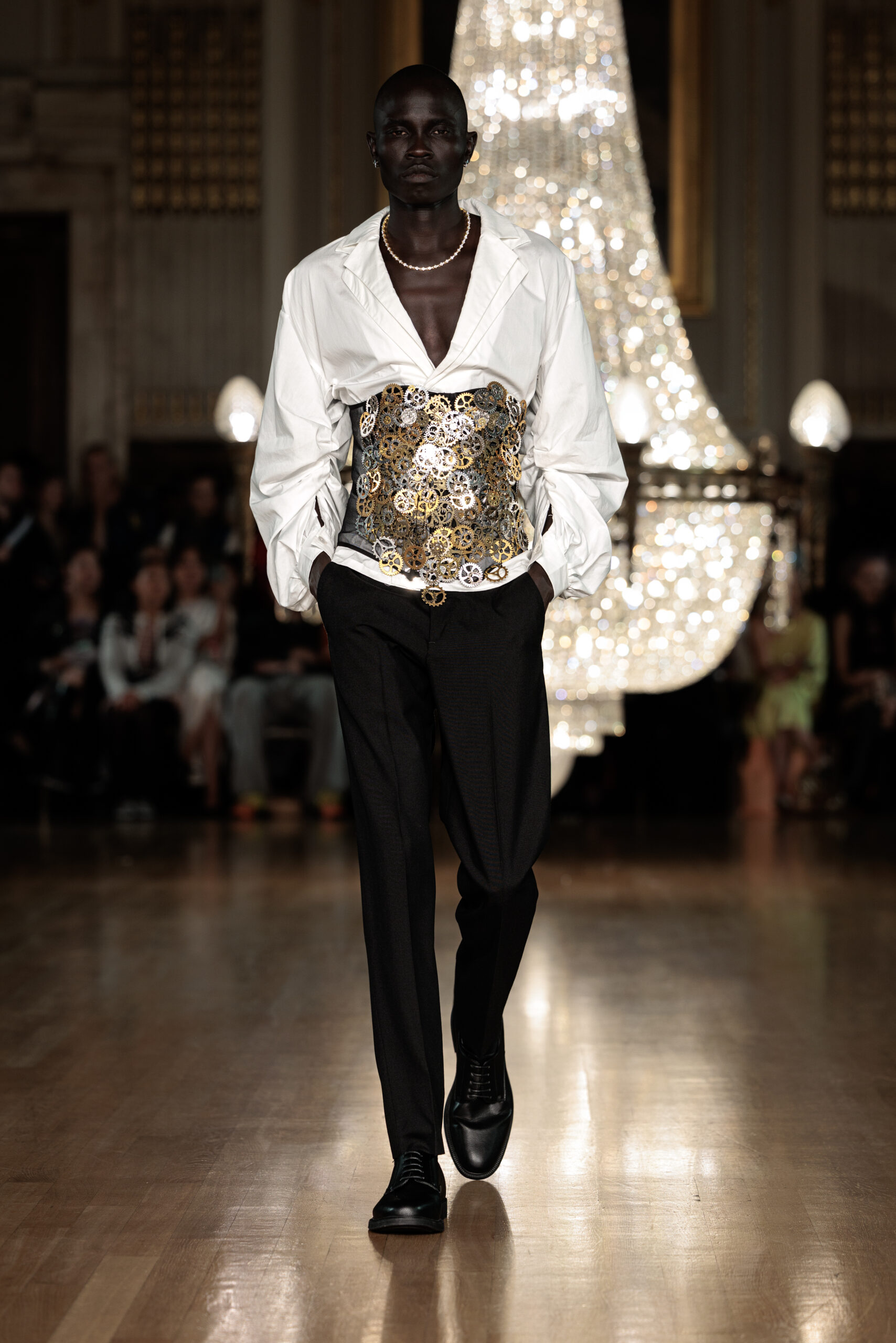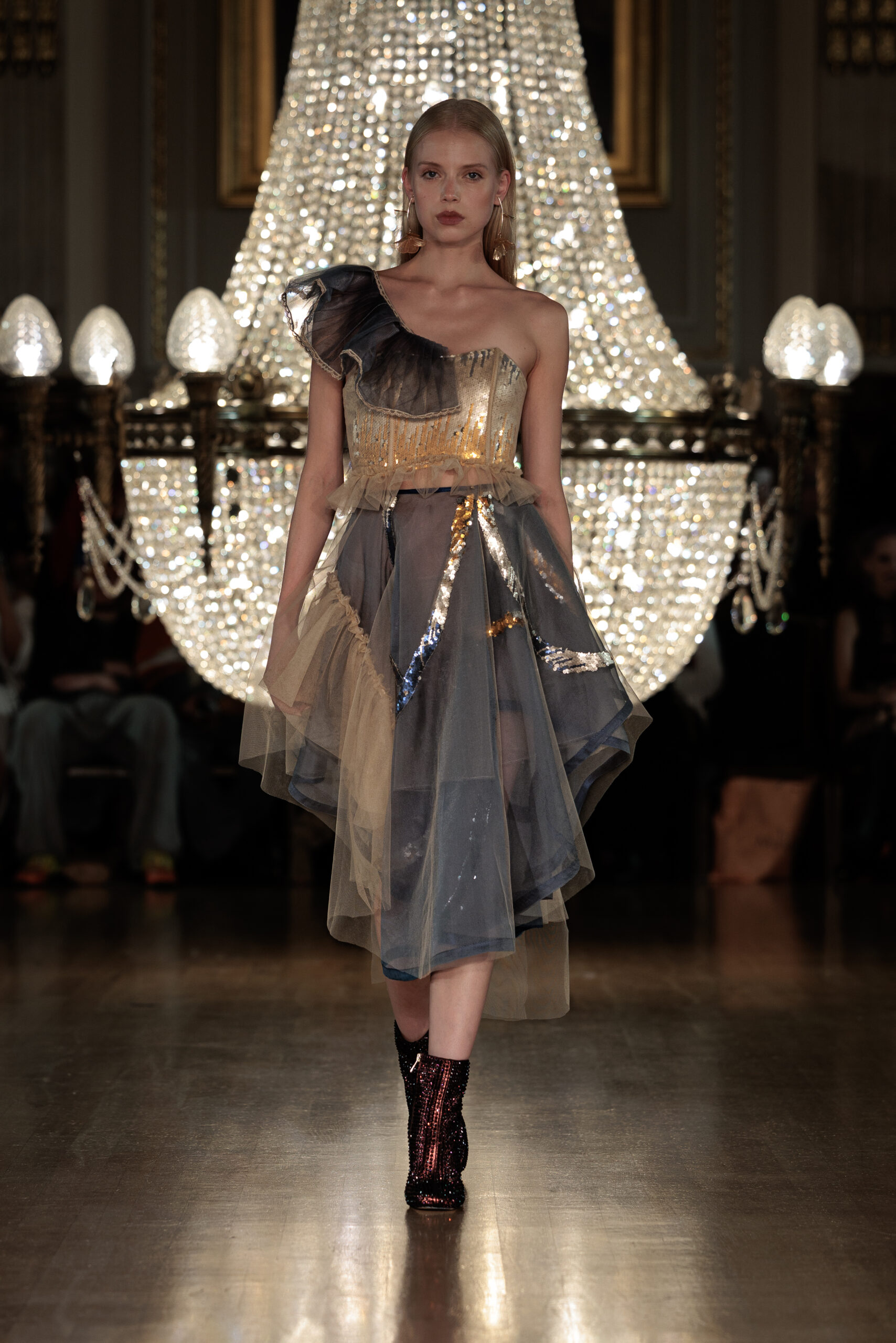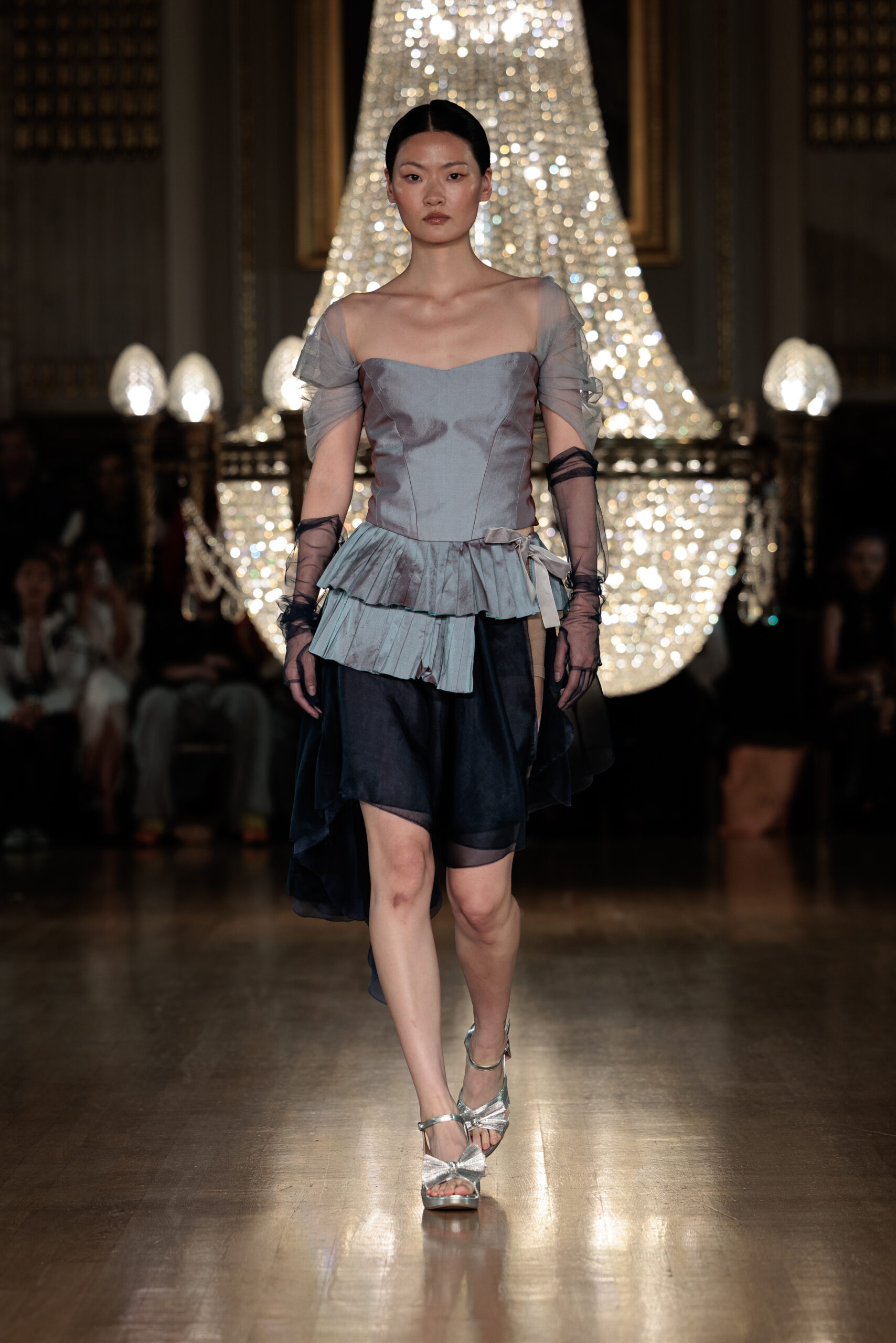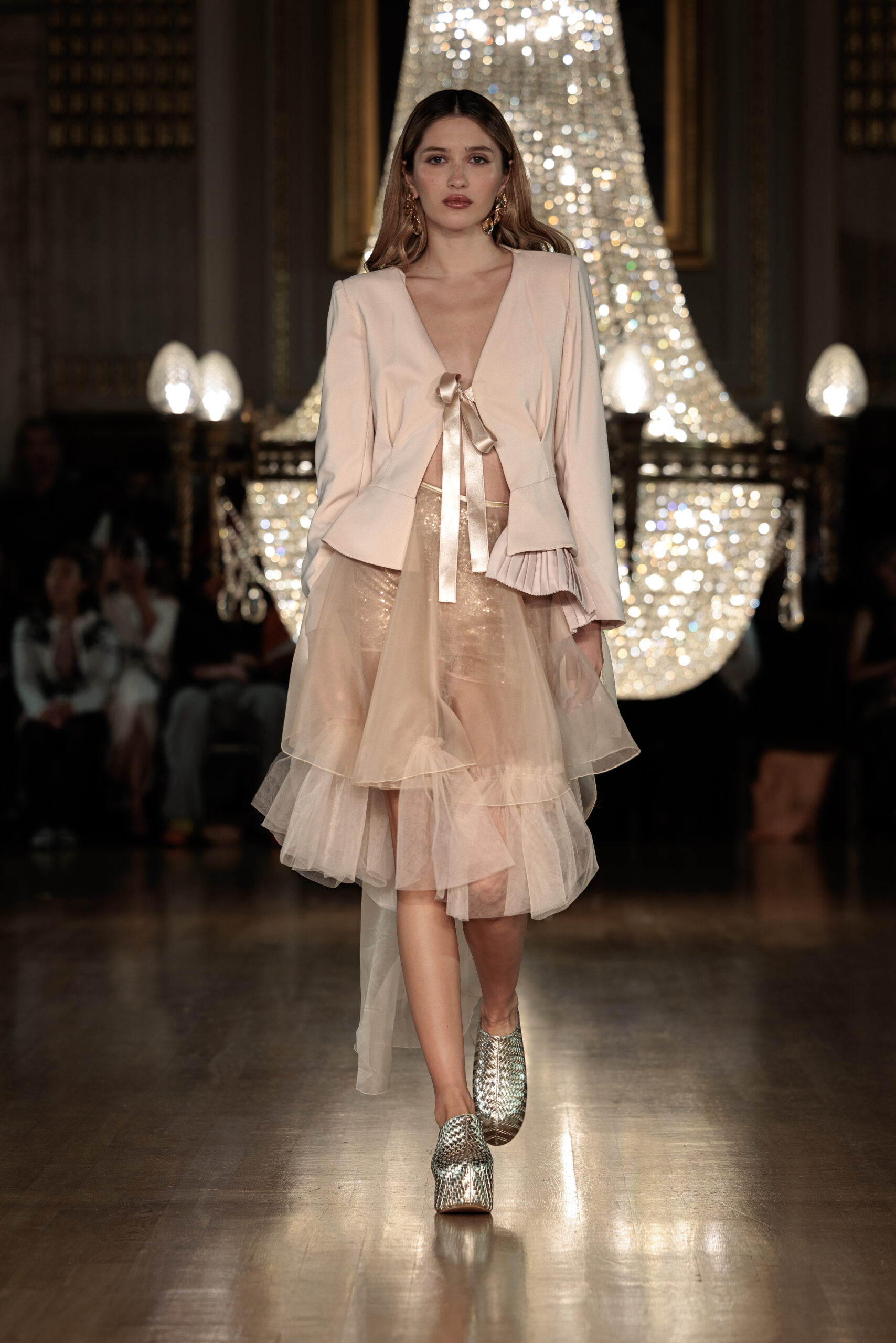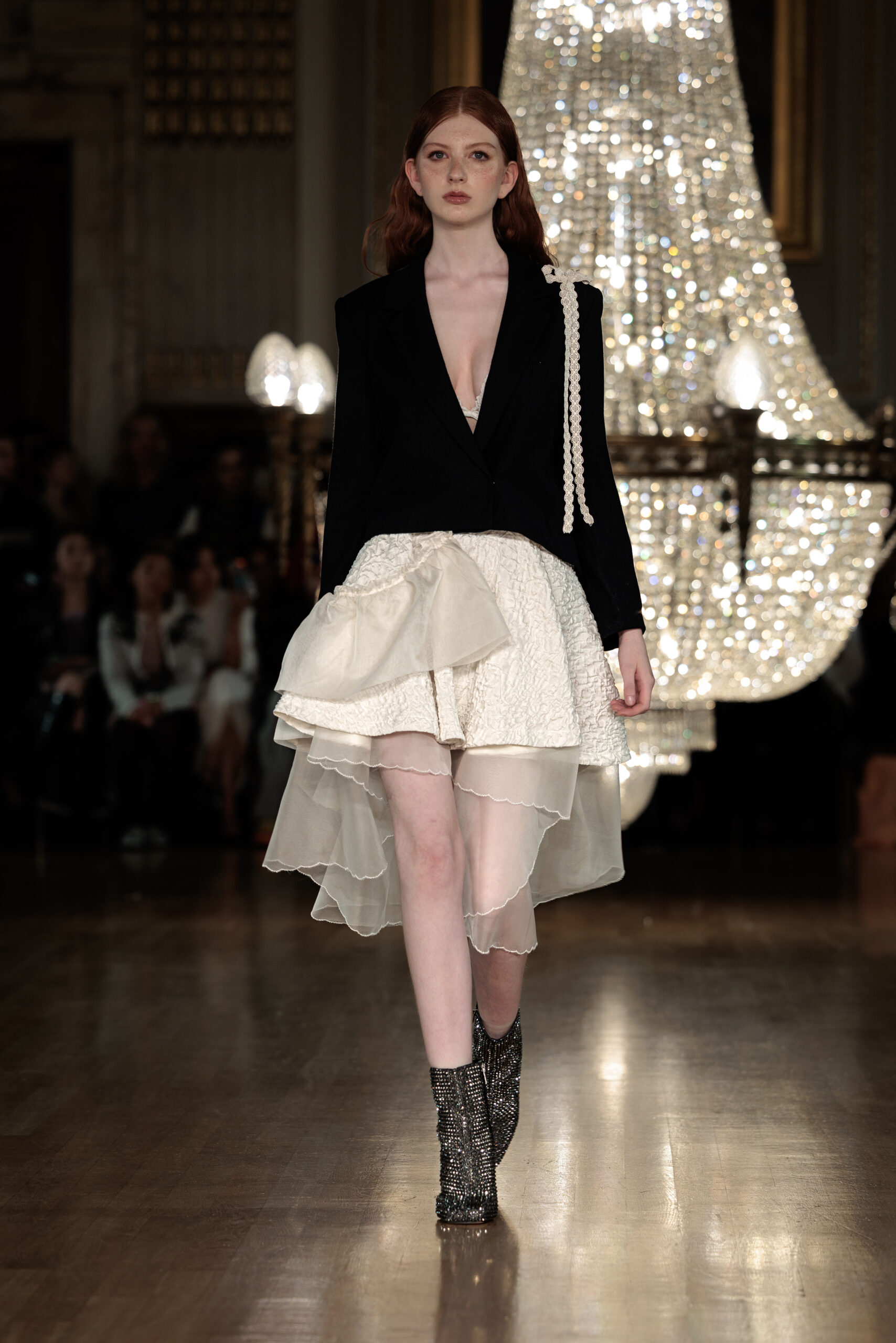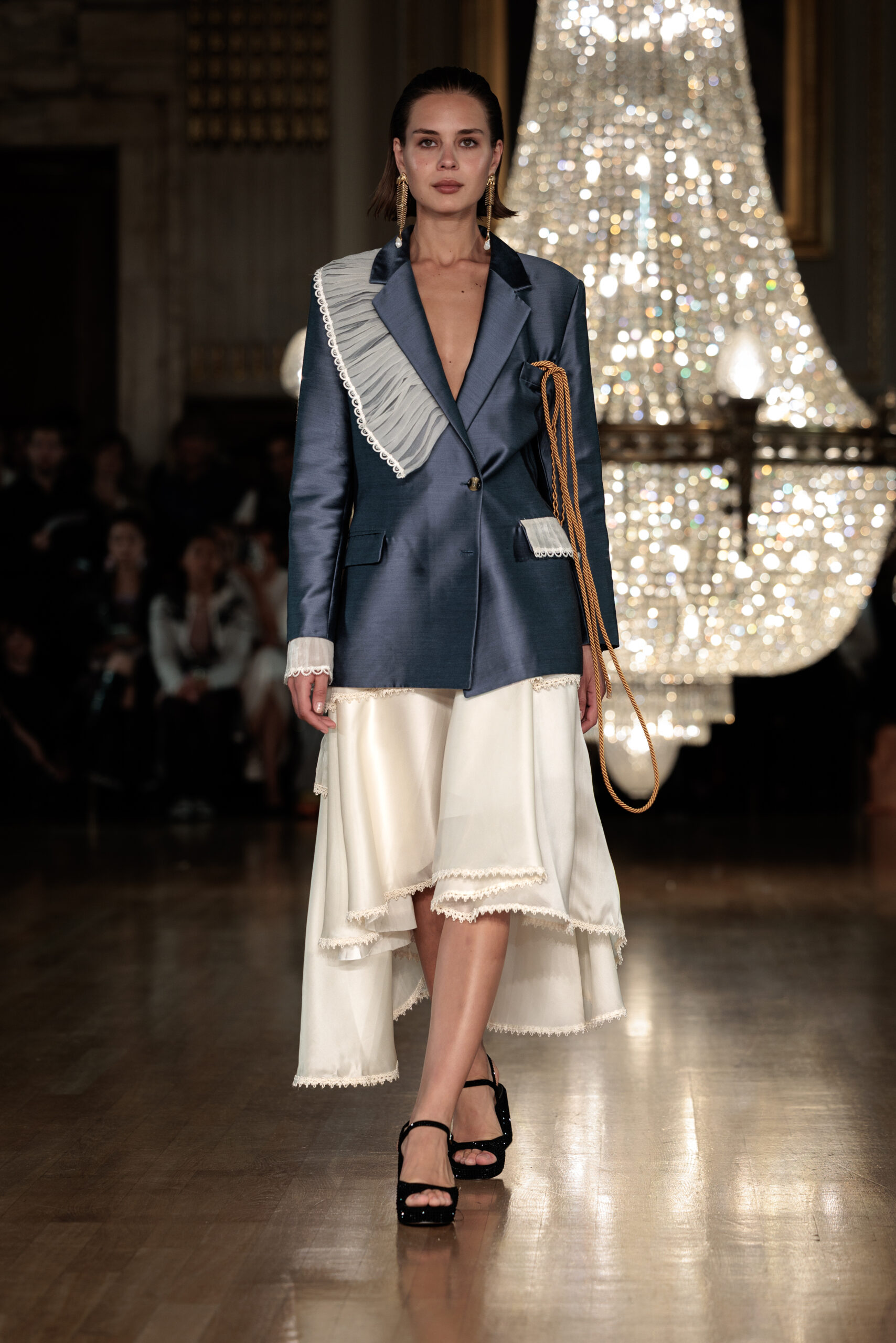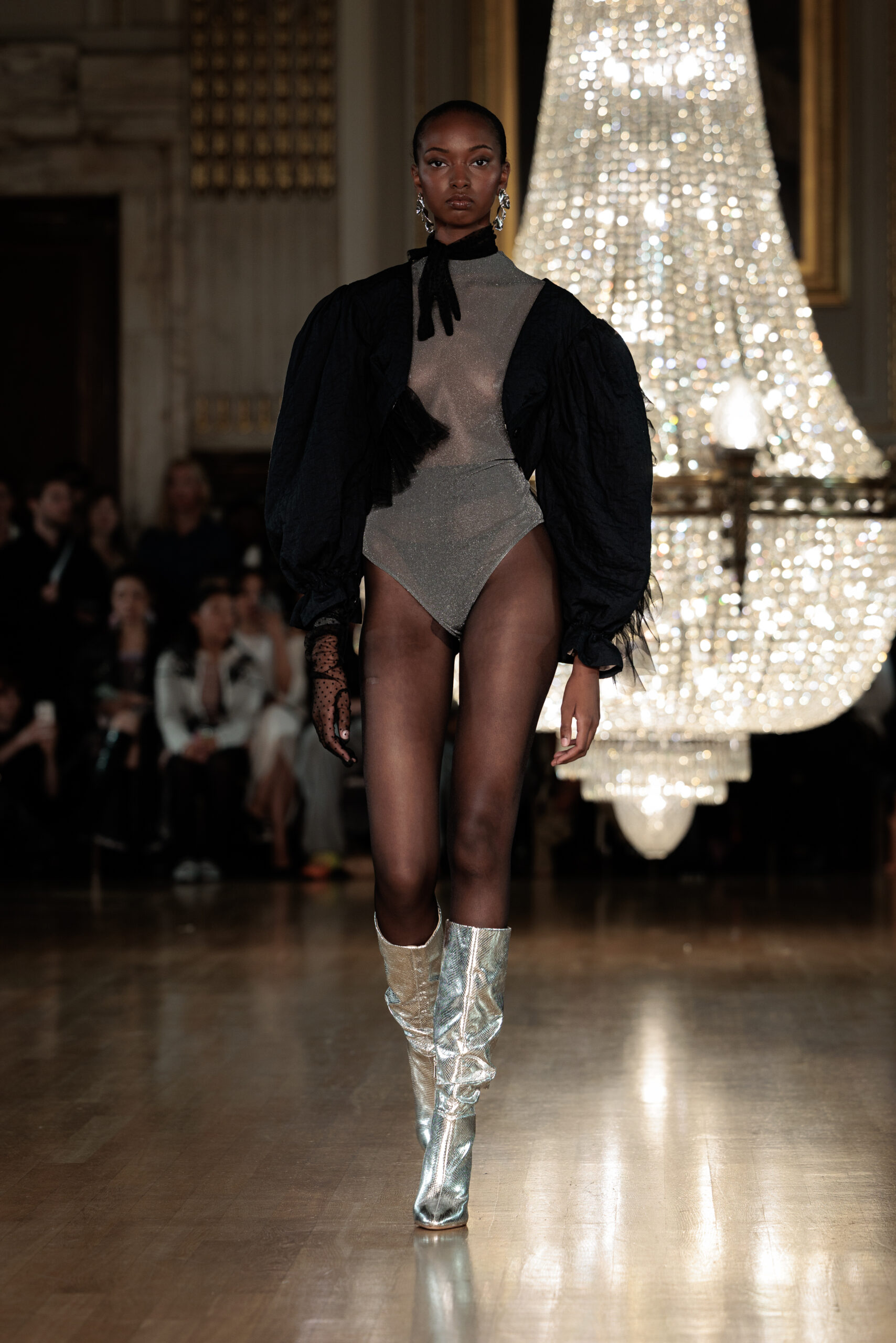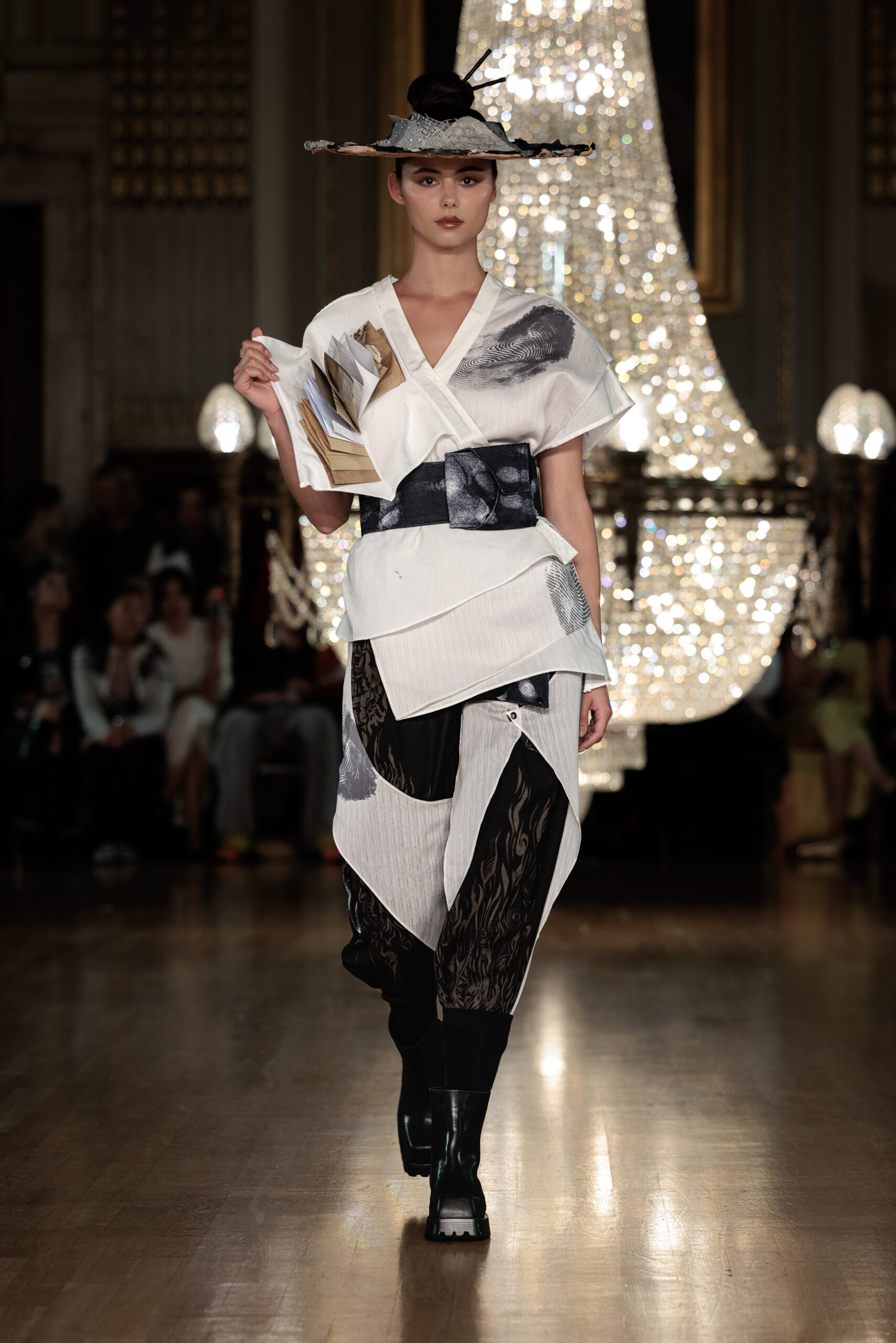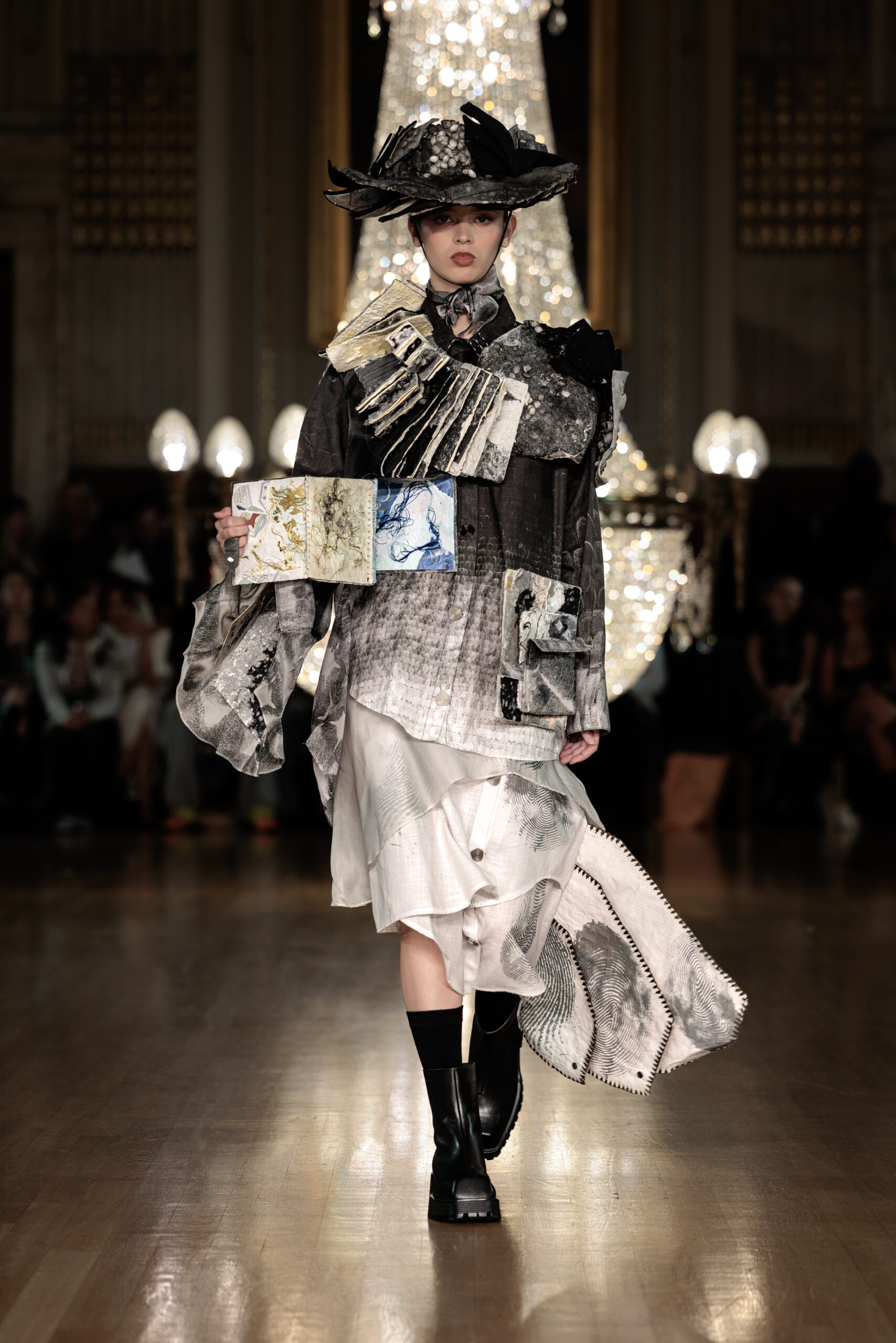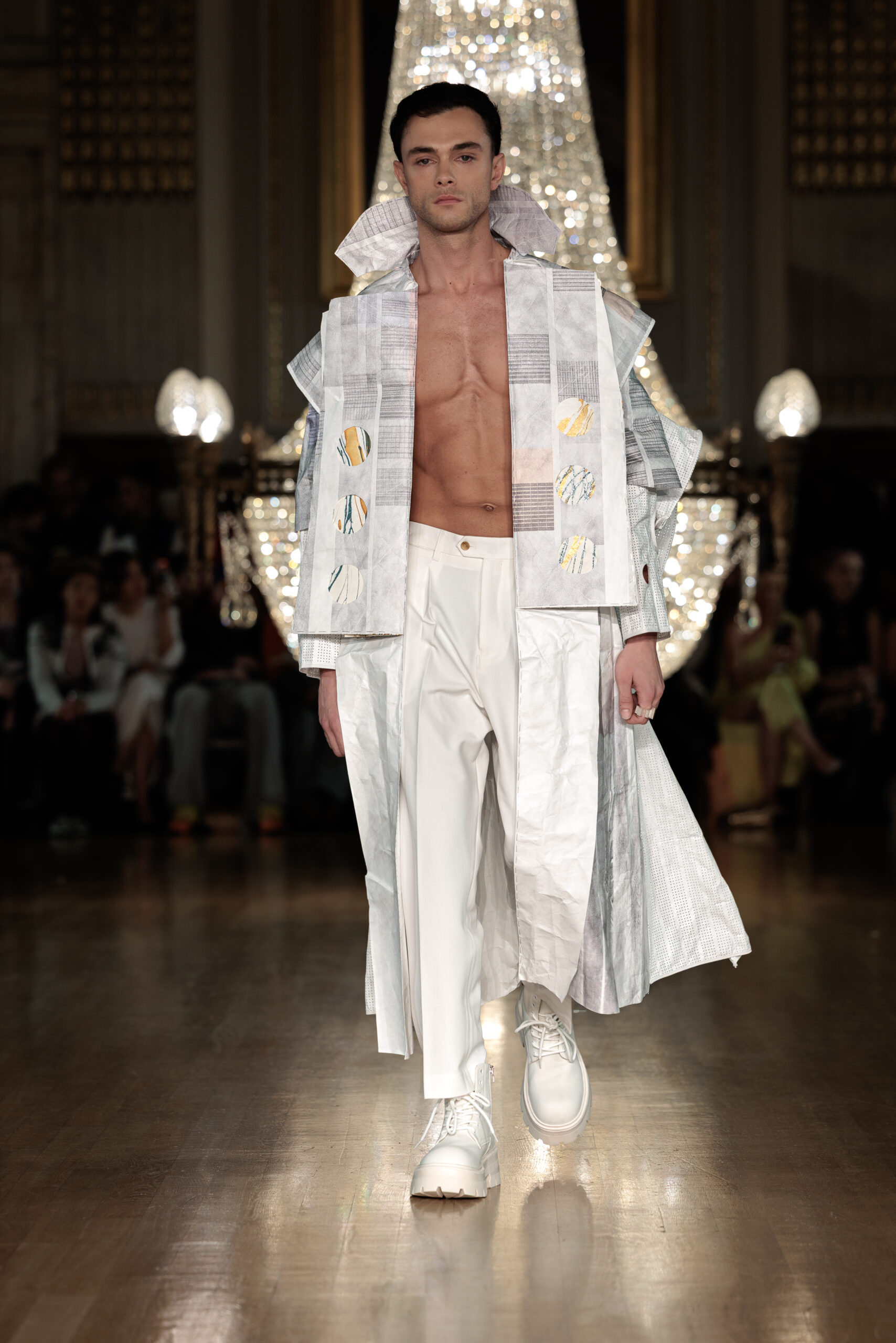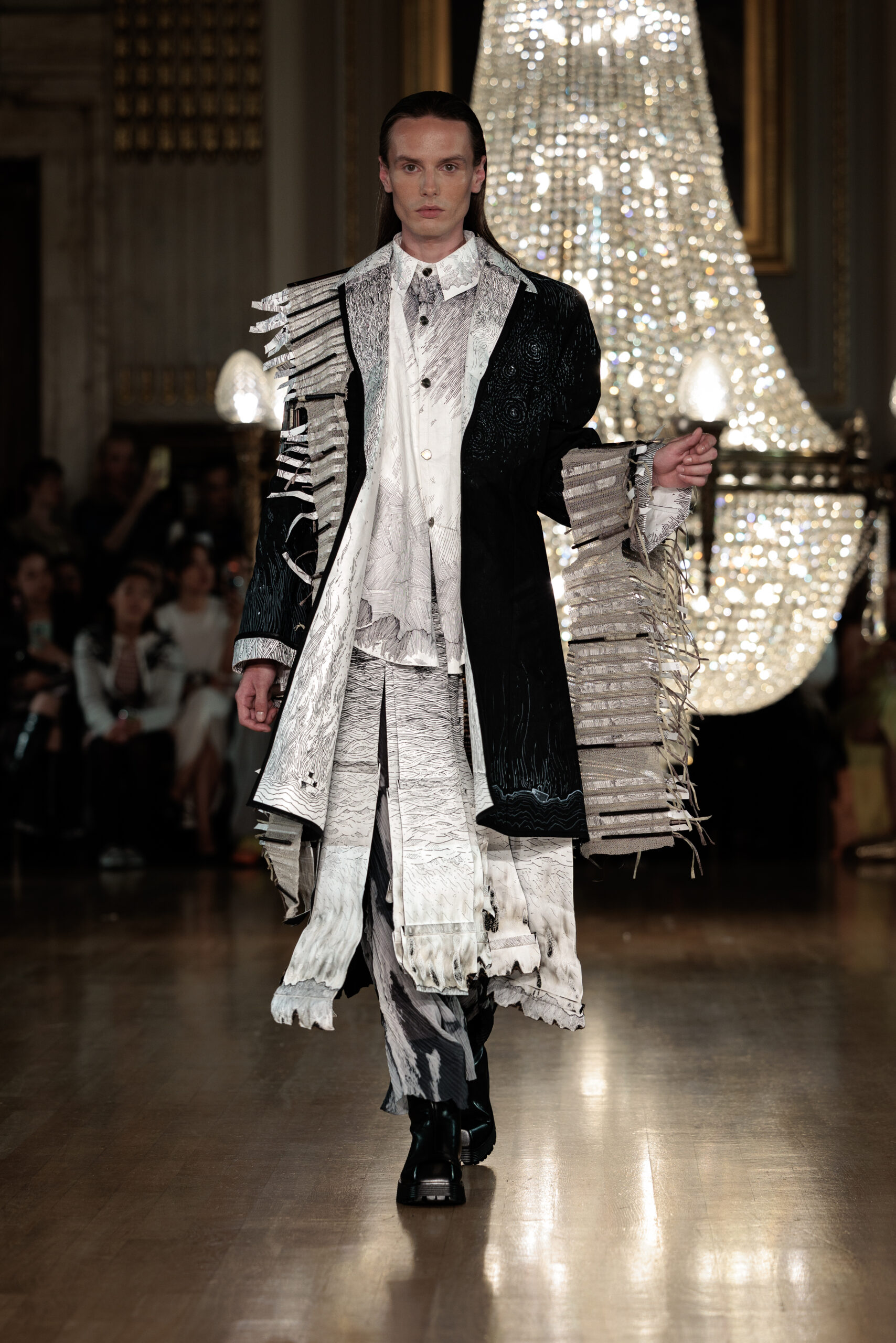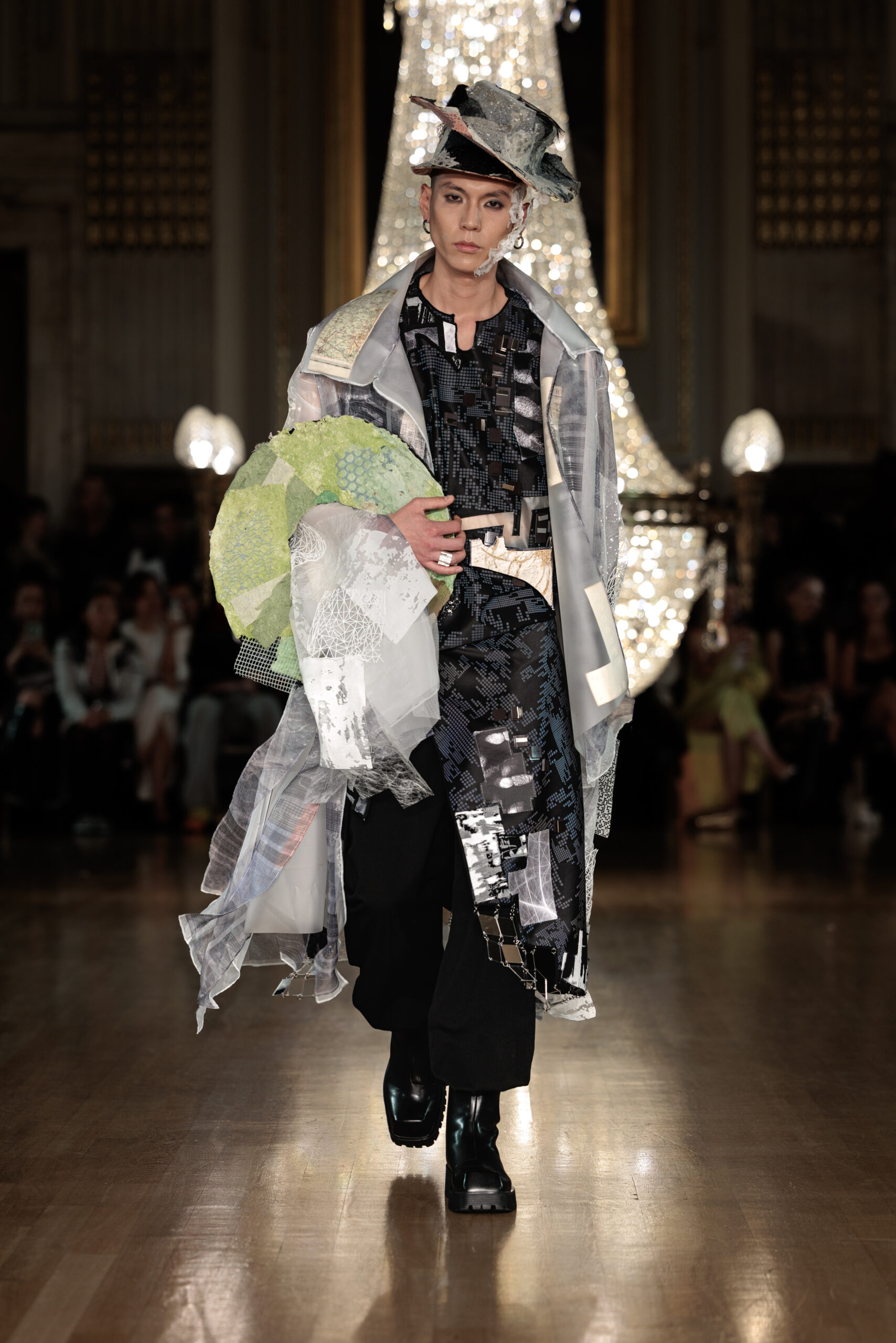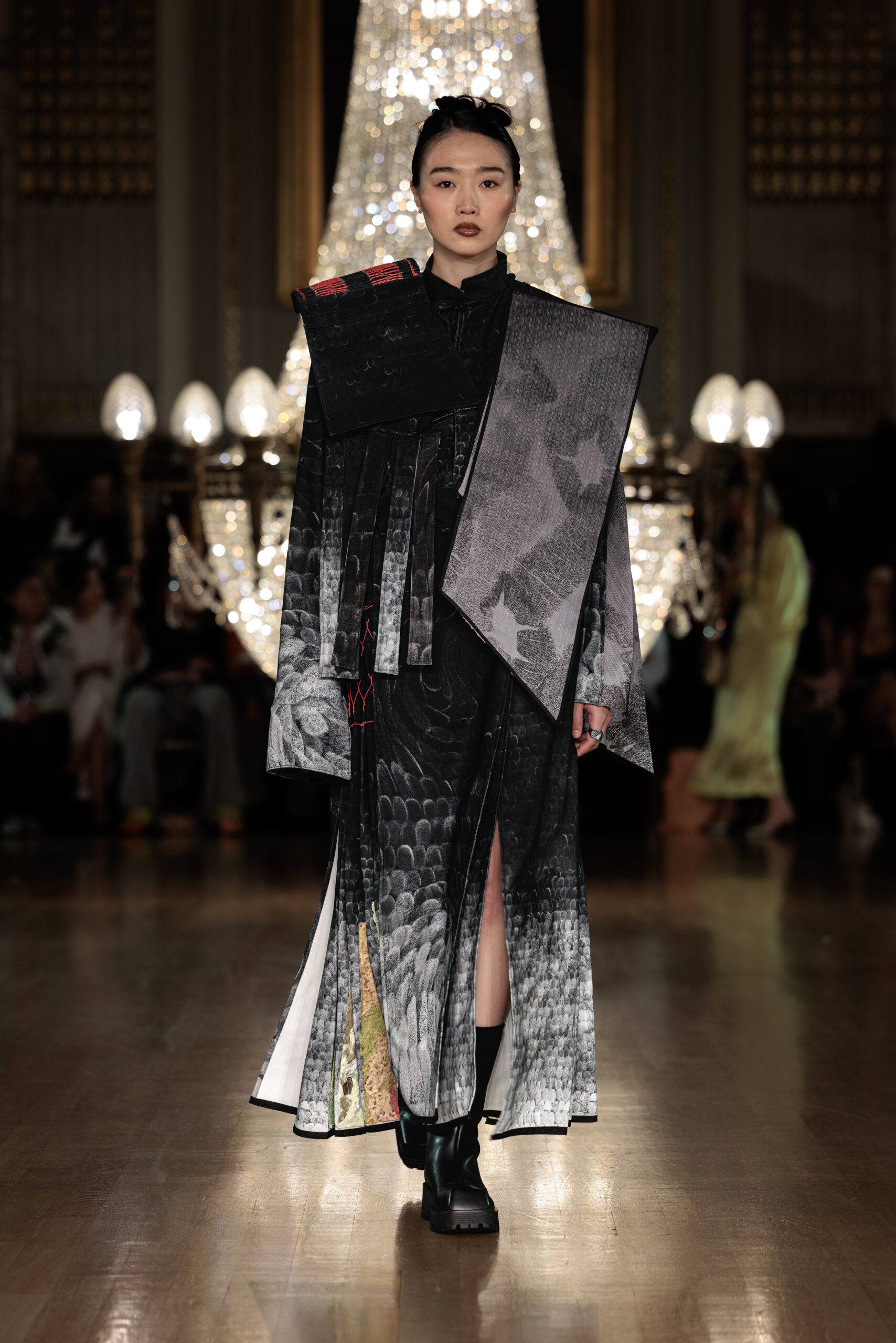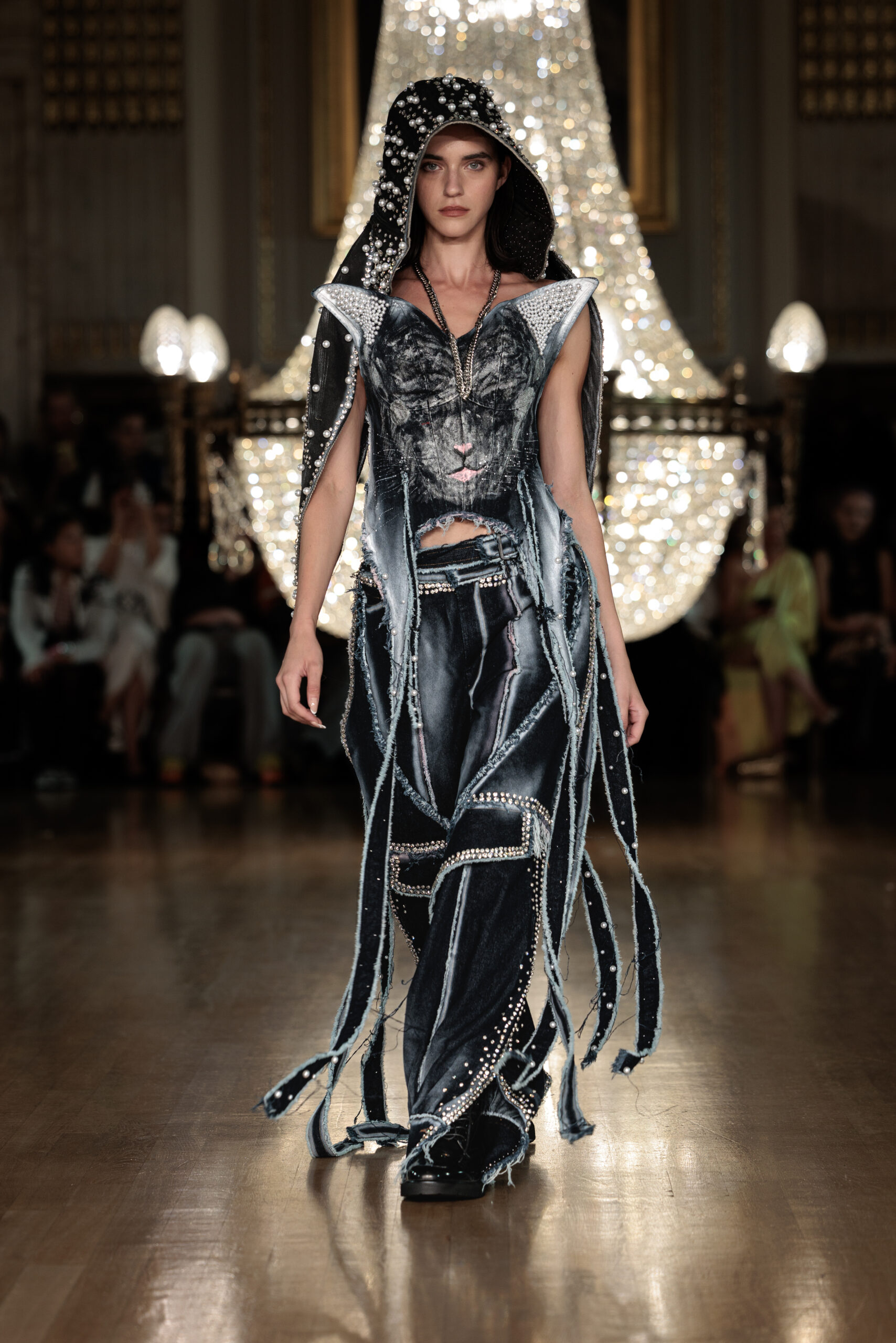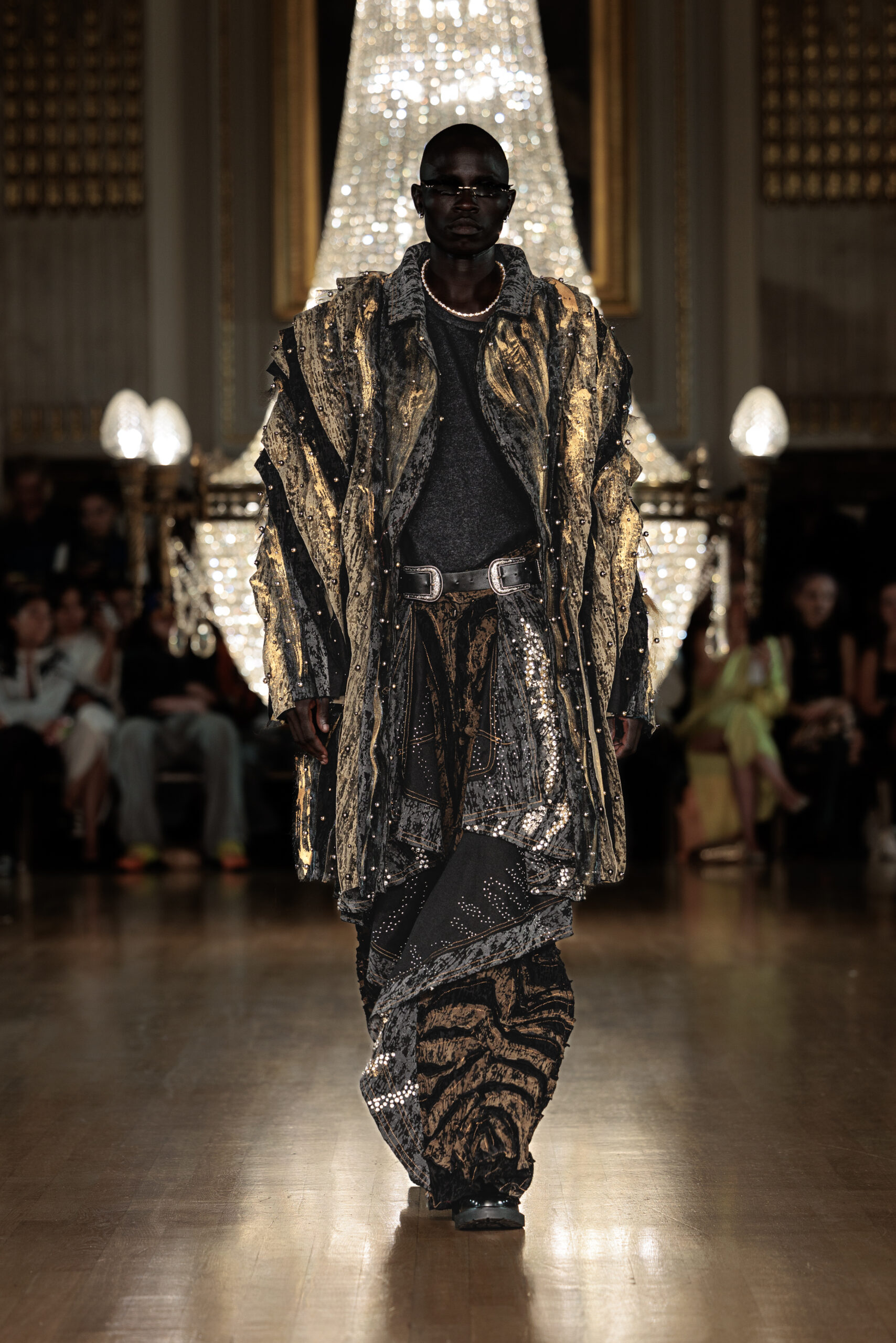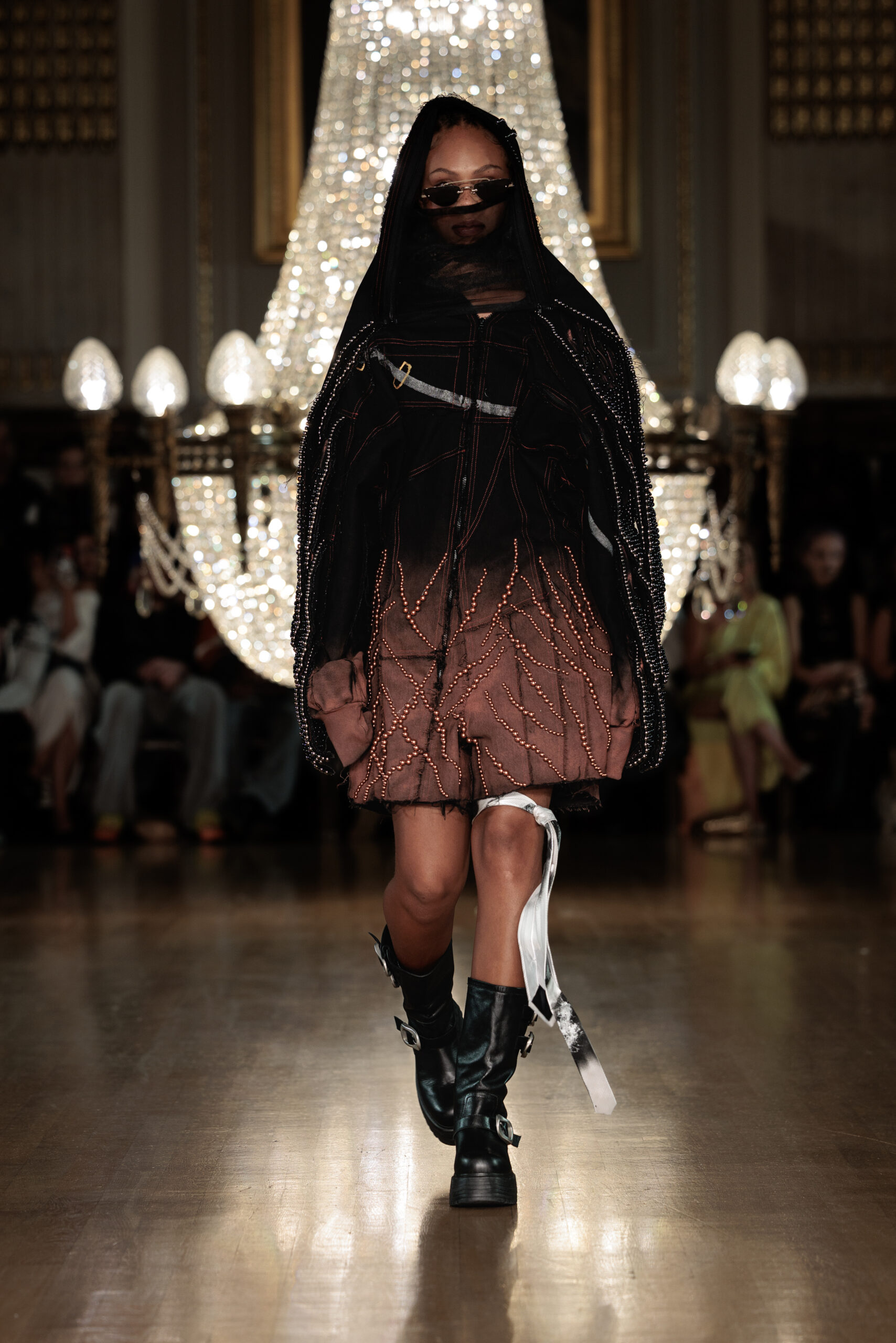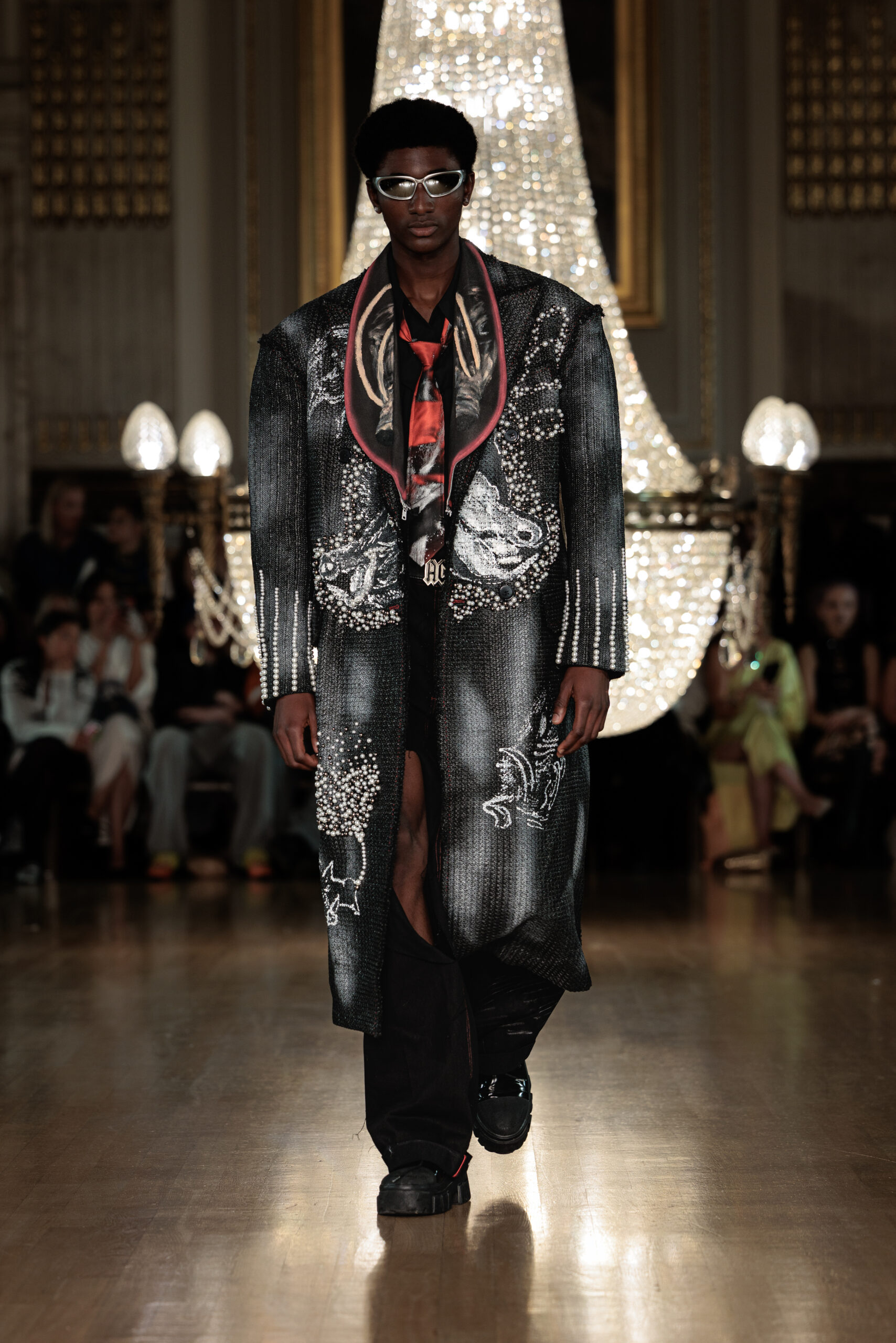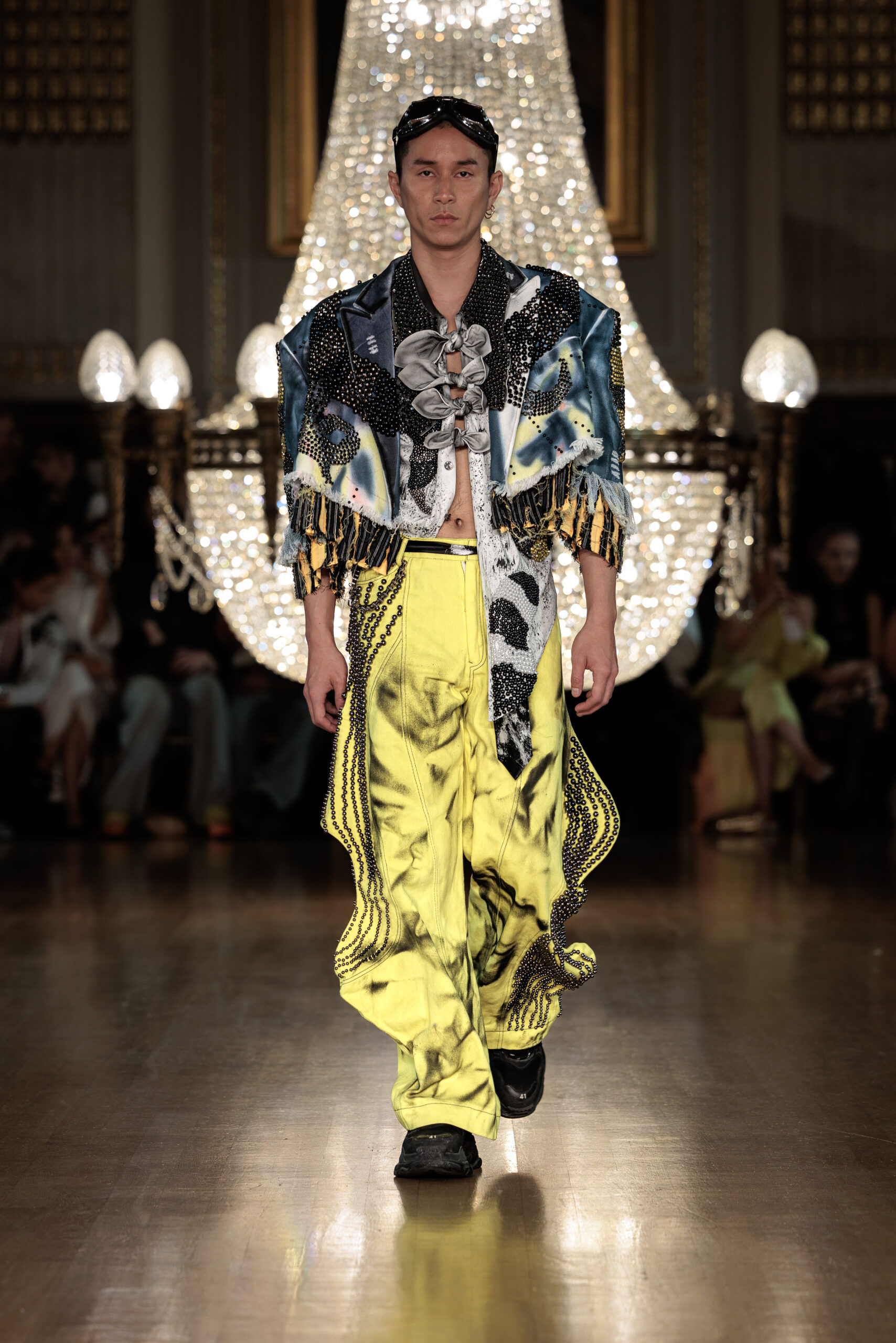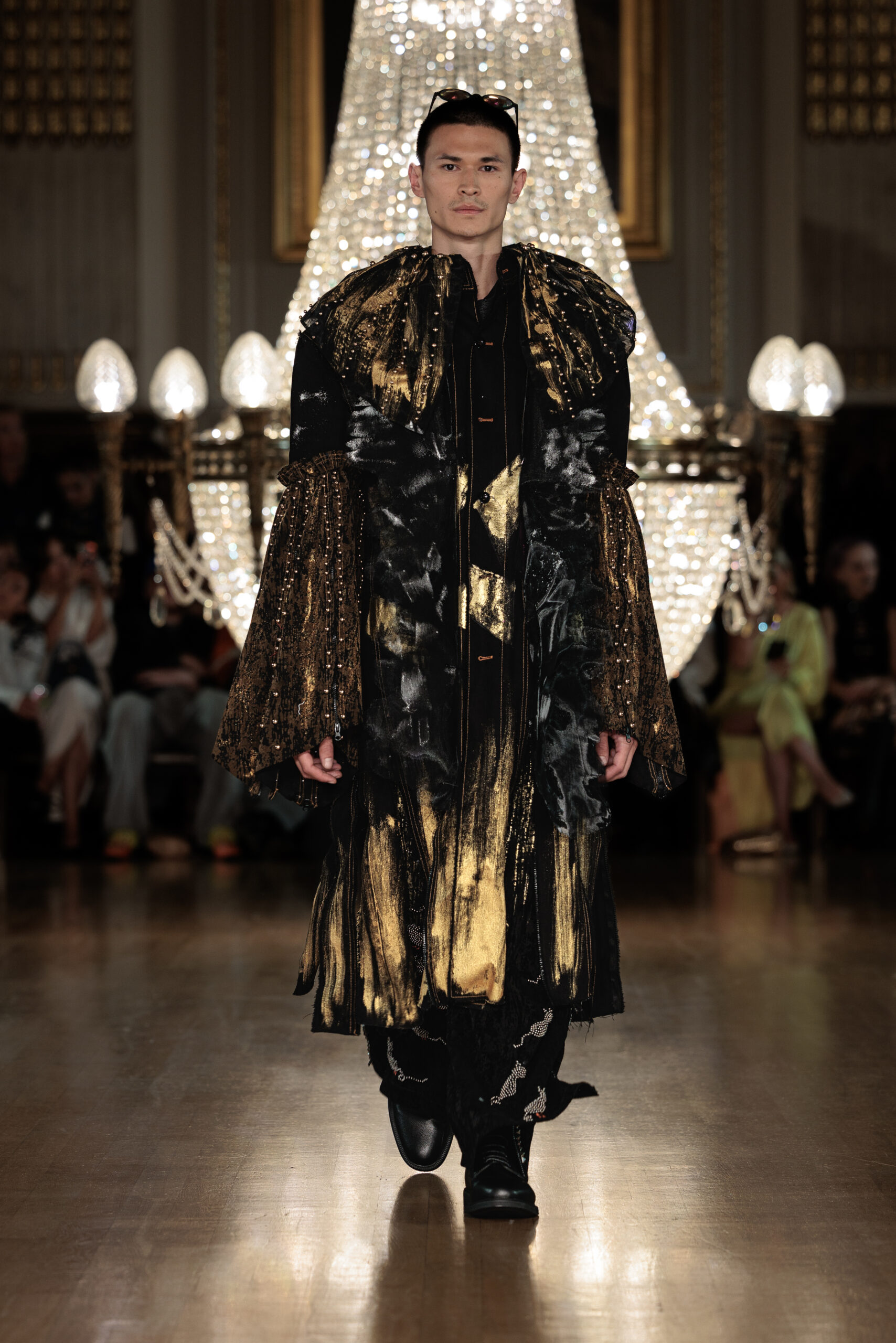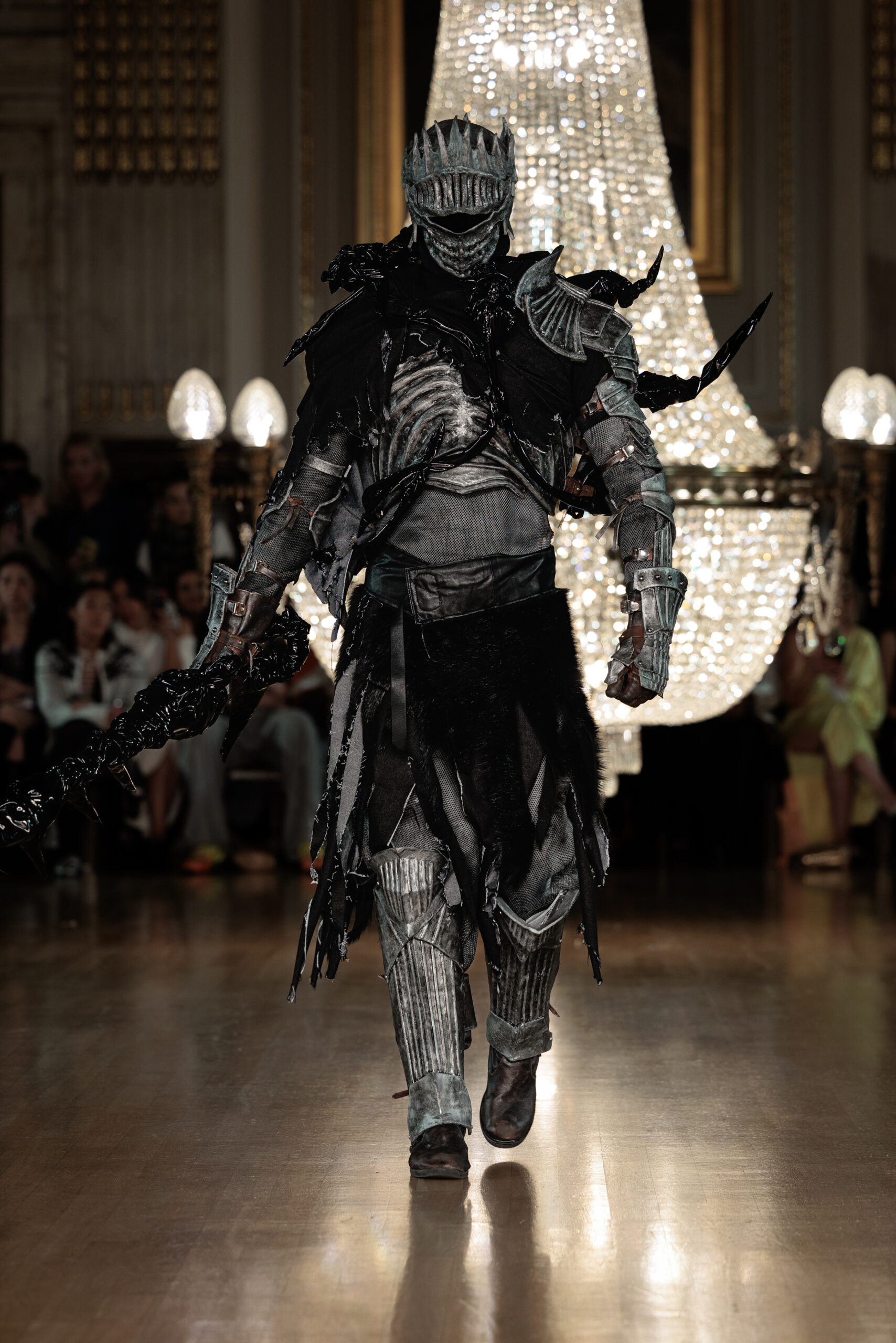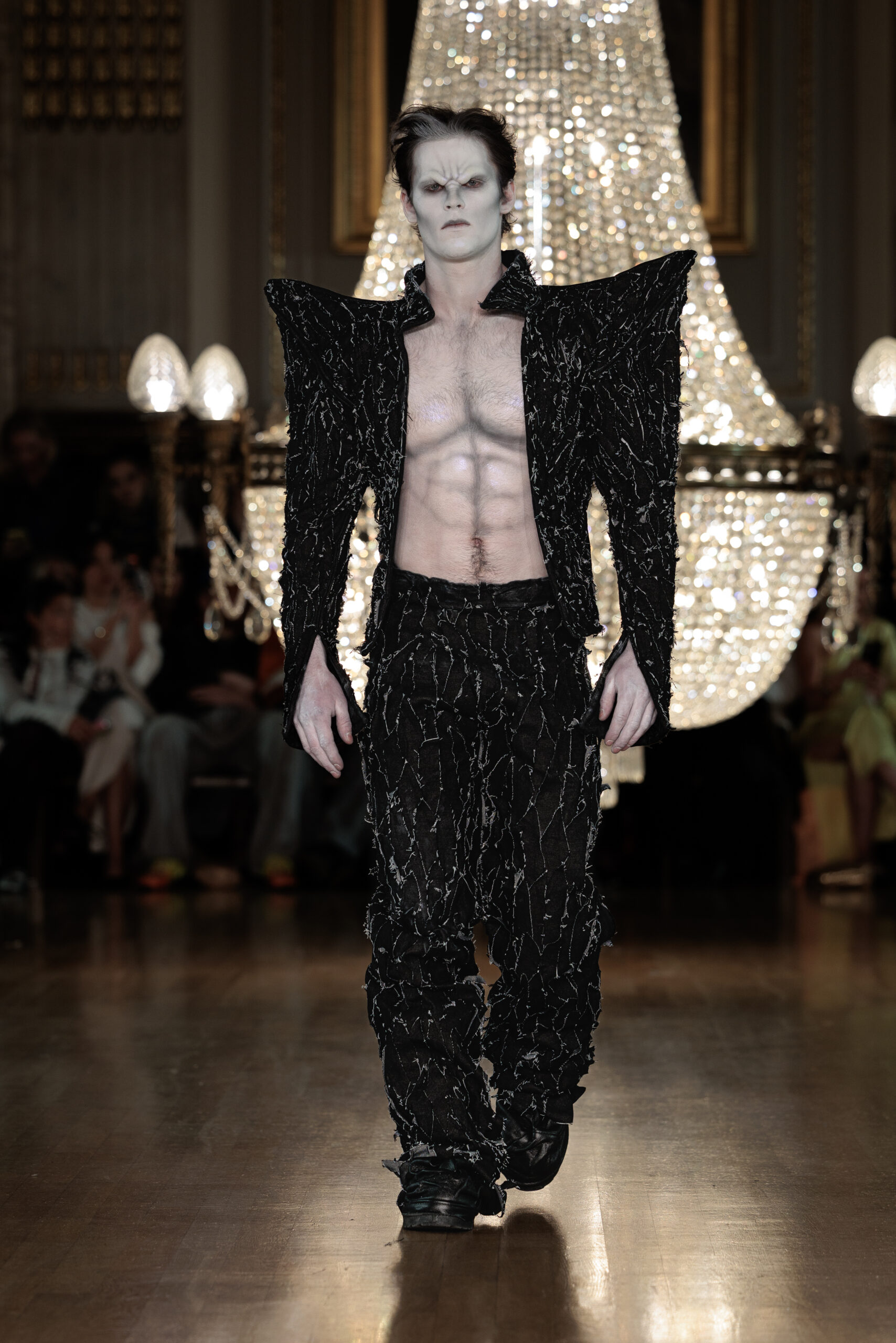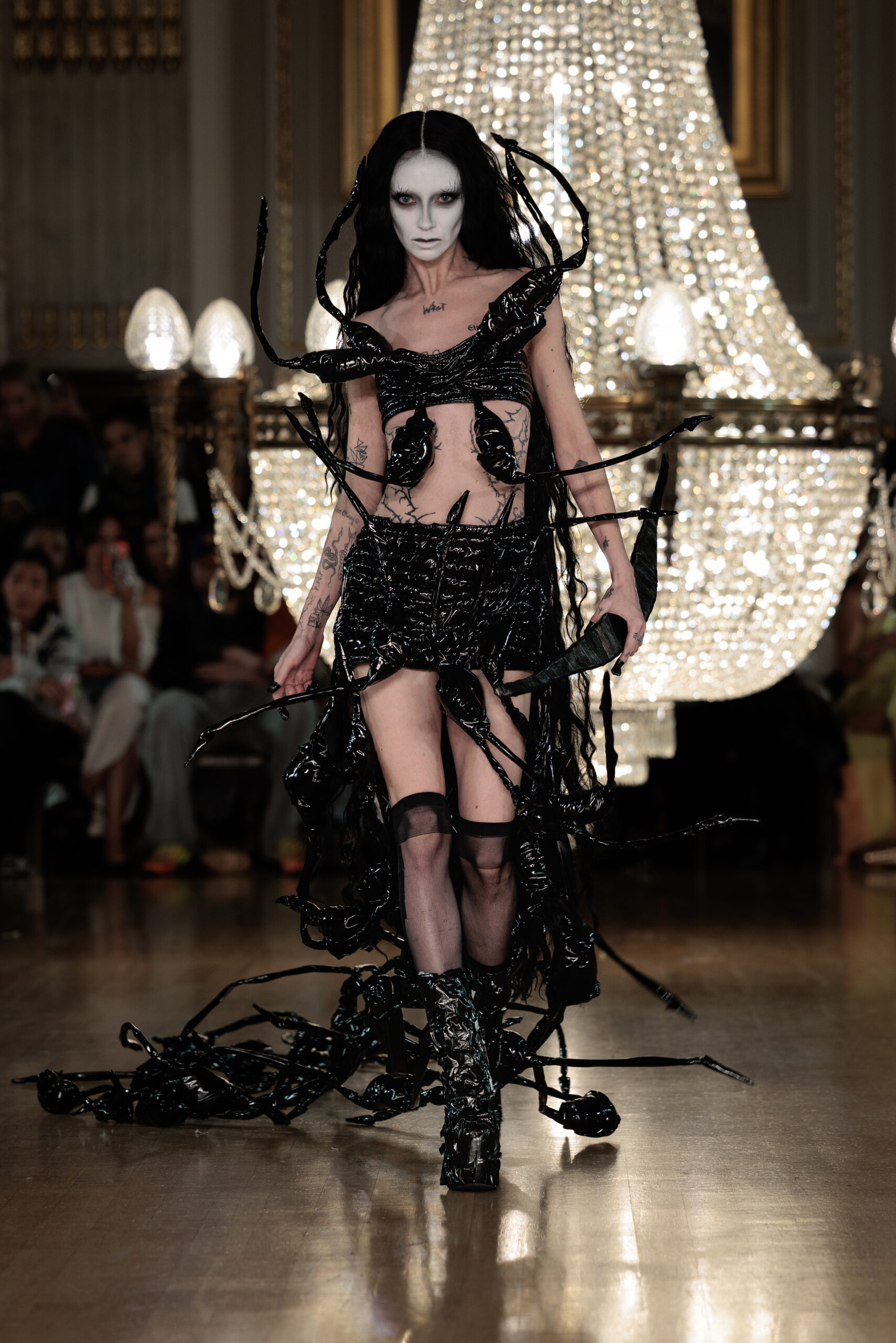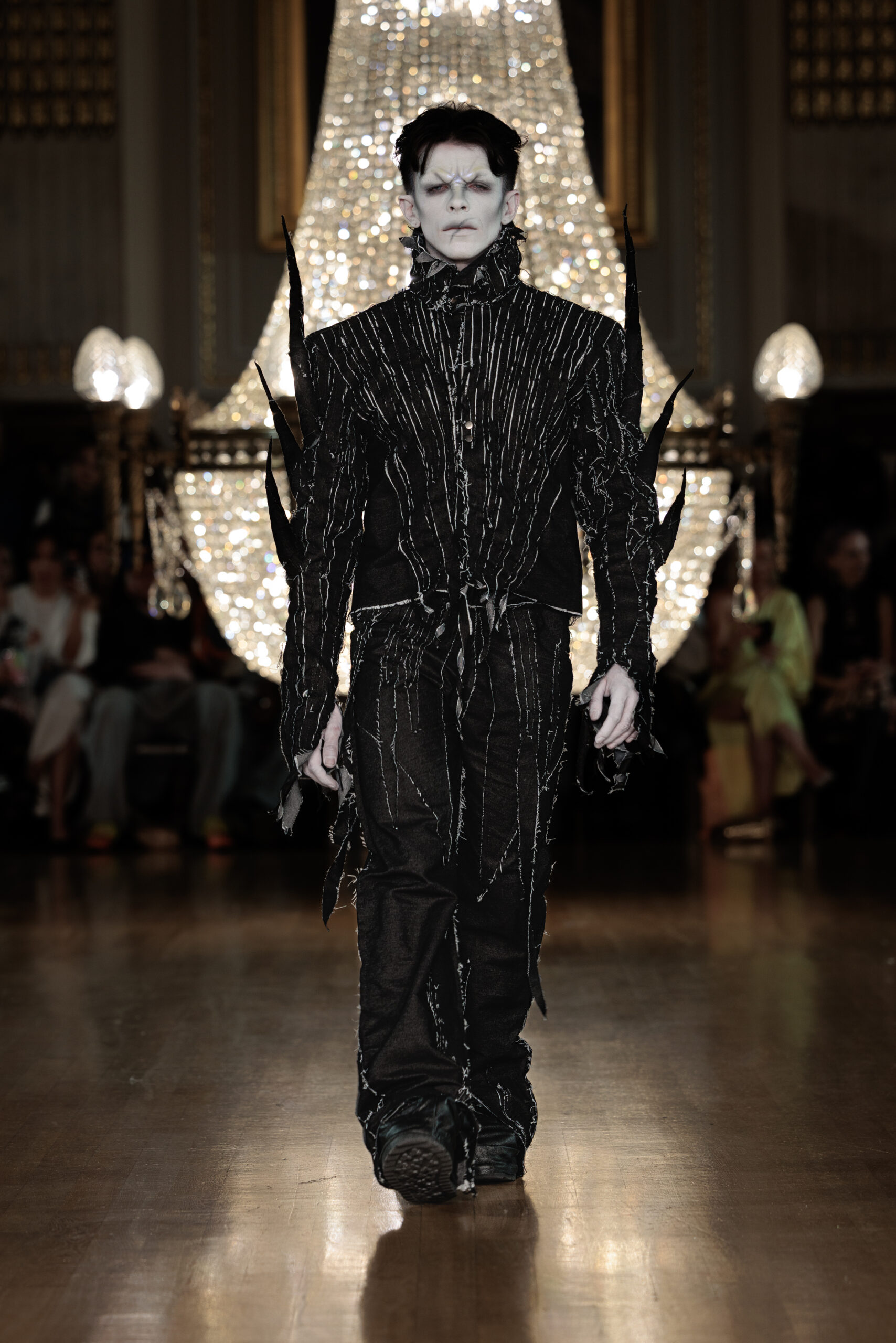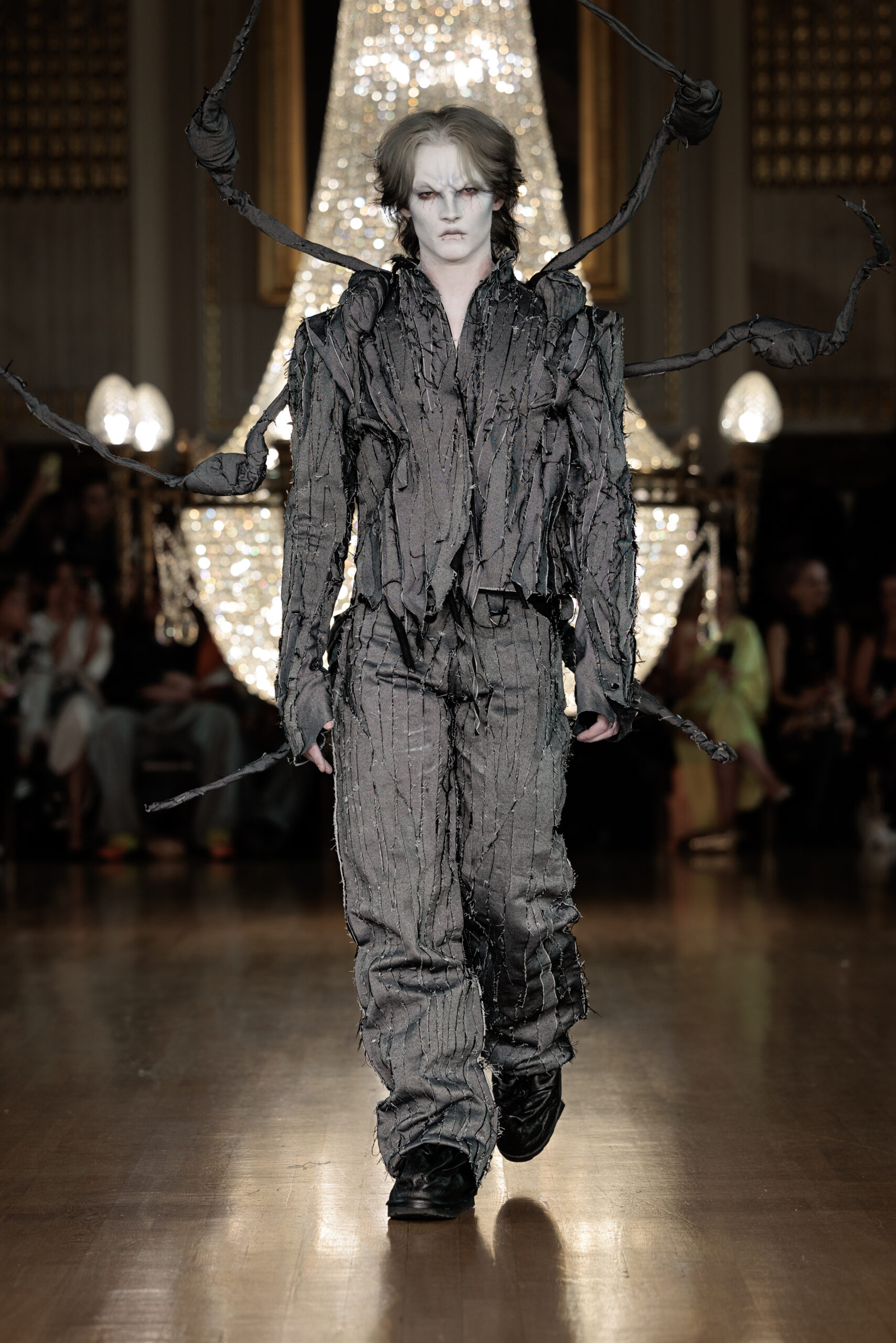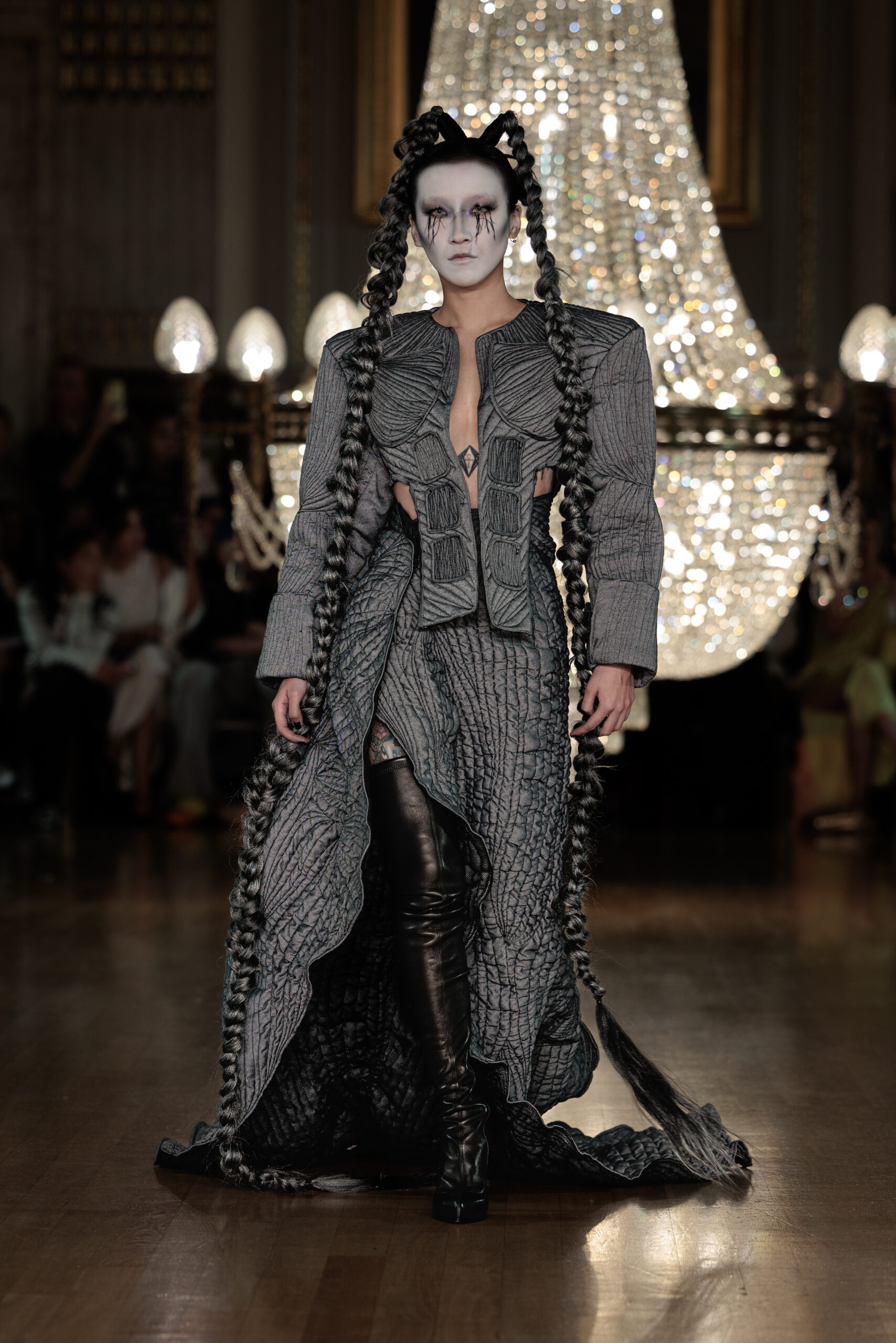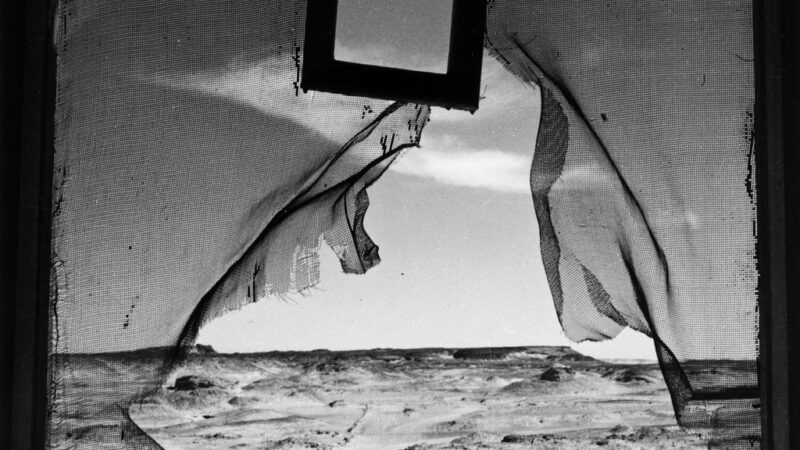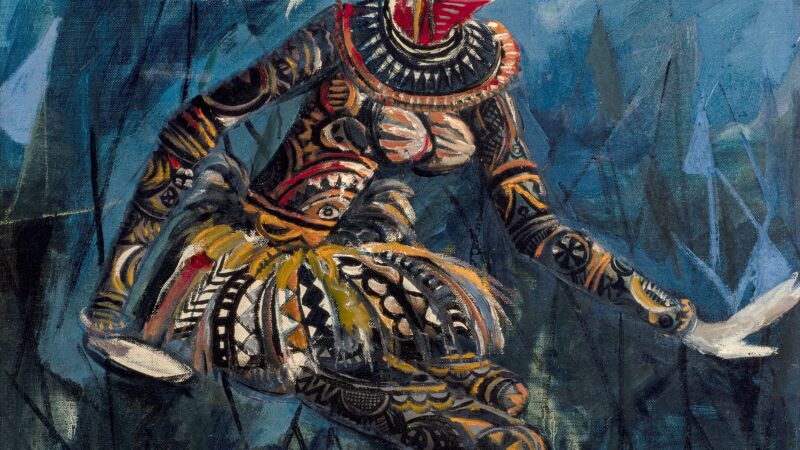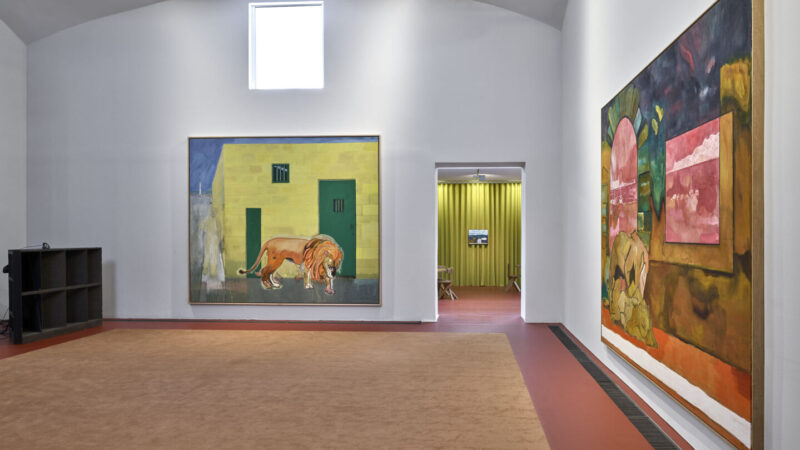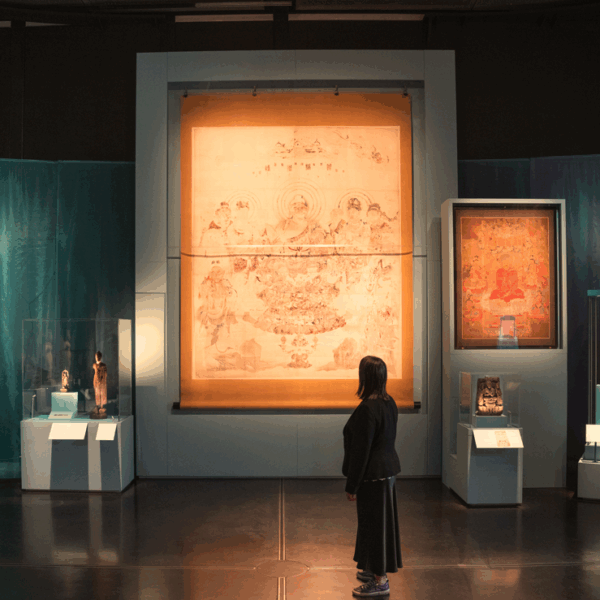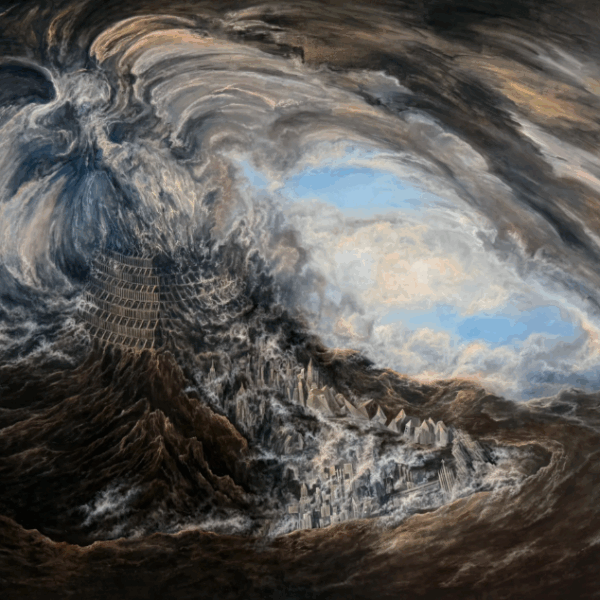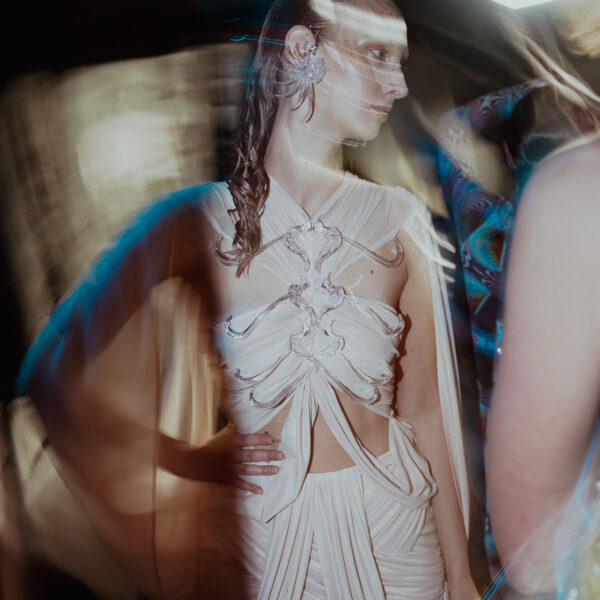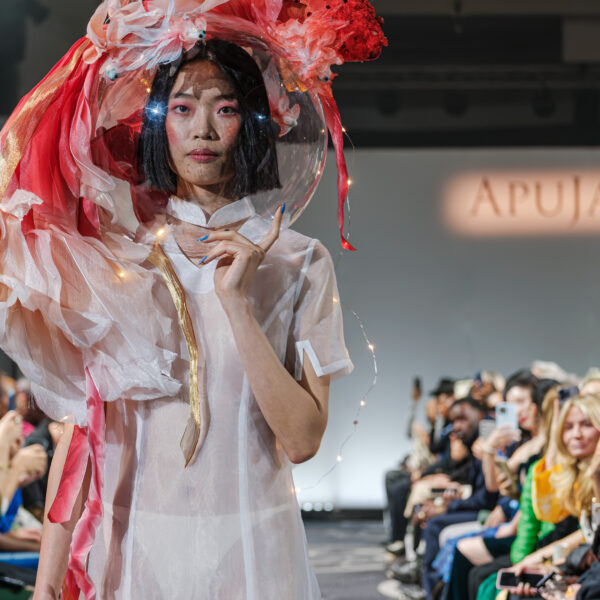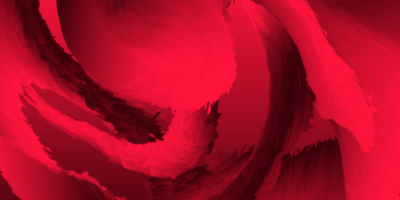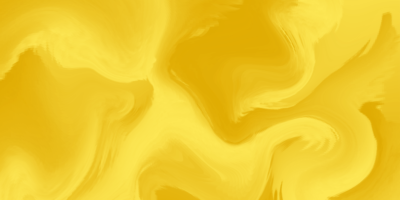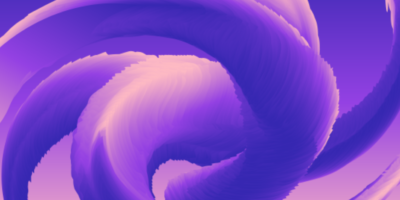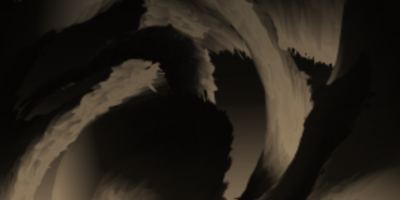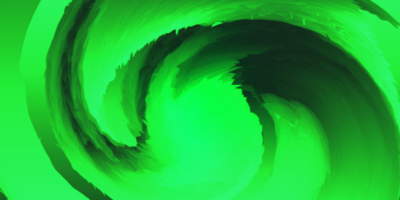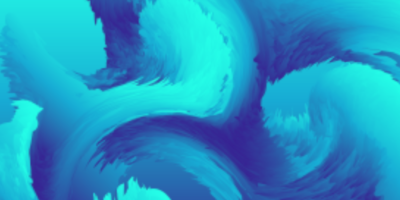LFW: Flair Fashion – Ignite
“Flair Fashion is a forward-thinking platform dedicated to supporting emerging designers who are shaping the future of design, sustainability, and technology. Its mission is to empower creatives, democratise the fashion industry, and foster a thriving ecosystem that extends from manufacturing to retail.”
Beneath the warm chandeliers of One Great George Street, Flair Fashion – in partnership with the British Fashion Council – presented a dynamic fashion showcase of visionary talent from around the world.
Etnik Shala opened the runway with MYTH, a collection that transformed the runway into a cathedral of fantasy. Beneath glittering chandeliers, models glided like celestial beings — saints, seductresses, and deities reborn. The show felt less like a fashion presentation and more like a vision: opulent, spiritual, and unapologetically larger than life.
Sculpted silhouettes and liquid metallic fabrics traced the body like armor for goddesses. Shala’s signature craftsmanship was on full display: corseted bodices molded with architectural precision, velvet and lamé that shimmered like relics, and embroidery that glowed under the golden light. Each look told its own myth — from a sculptural azure gown that rippled like a stormy sea to baroque mini dresses edged in gold, to sheer, veil-draped figures that hinted at both power and vulnerability.
The collection’s palette balanced divinity with desire: electric blue, emerald green, burnished gold, and inky black, each chosen to heighten the drama of form. The models’ poise — statuesque and deliberate — reinforced the show’s sacred energy. These were not women dressed in clothes; they were embodiments of worship, revelation, and transcendence.
MYTH isn’t interested in trends or minimalism. It’s a reclamation of grandeur — of fashion as modern ritual. In a cultural moment obsessed with relatability, Shala dares to restore fantasy. His work reminds us that beauty, mystery, and imagination still have the power to awe. MYTH doesn’t explain itself because true divinity never needs to.
Next came Linxi Zhu’s Siren collection, where each piece uniquely presented a distinct element of the Siren’s mysteriousness: sharp defenses, the flowing sensitivity, an entangled awakening, hypnotic seduction, radiant generosity, and transcendent but elusive calm. It is through this emotional journey that Zhu hopes we can discover reflections of ourselves in different stages of life – “moments of emotion, strength, gentleness, and sparkle”.
Zhu says, “I carry thousands of imaginations of how it could take shape, and I often look back at my previous work to understand my way of thinking.”
With Siren, Zhu cast the runway as both stage and shoreline, where garments shimmered like half-remembered myths breaking the surface. Sculpted forms rose in 3D-printed arcs, twisting like the polished bones of sea creatures; ribbon drapery coiled and unfurled like waves; petal structures layered themselves into delicate armour.
“I love bridging digital technology with physical clothing, and 3D printing is a key method to visualise my thoughts. Digitally, there are far more possibilities to create something magical that can’t be achieved with fabric alone. Through this process, I can easily sculpt my ideas and bring them to life.”
Fluid fabrics clung and slipped away in turns, while metallic contours caught the light like scales, gleaming with both seduction and danger. It was a collection alive with duality: fragility set against strength, allure tangled with menace.
The interplay of textures — from soft, flowing organza to hard, sculptural shells — framed each garment as both seductive and confrontational. They were not passive beauties but forces of nature — embodiments of myth and warning, desire and dread.
“This collection is a reflection of my mind and identity. Each look is like a voice in my head, carrying its own tone and emotion. Some are sharp and defensive, others are fluid and entangling. Some bloom with possibility, while others lure with quiet seduction. I match materials and structures to these feelings, giving them form and presence. Through the contrasts, fragility and strength, allure and threat, I let these inner tensions exist together. For me, the collection isn’t just about clothing; it’s a way of mapping my emotions, turning what’s hidden inside into something visible, something I can share.”
It was a show that insisted on fashion as narrative, merging myth, emotion, and technical experimentation into a cohesive vision, a collection she describes as “A gift for myself”.
Maggie Wang followed with The Childlike, examining childhood as both memory and methodology. The collection blended innocence with subversion, deploying unconventional materials — eggshells, mosaics, puzzle pieces — to create garments that felt simultaneously fragile and audacious.
For Wang, childhood is a time when everything feels possible: “You’re fearless, curious, and a bit mischievous. Now, we forget to look around, to daydream, to just play. Clothes can be a lovely reminder that life doesn’t have to be so serious all the time.”
The integration of objects directly into fabric showcased Wang’s technical precision and innovative craft. Silhouettes often broke from convention: playful, sometimes unruly, but always deliberate.
“Some pieces are like messy afternoons painting outside the lines, others feel like climbing trees and ripping your trousers but laughing about it anyway. There are also bits that remind me of birthday parties—bright, chaotic, full of energy. Each look is almost a little chapter of those tiny but unforgettable moments.”
The juxtaposition of traditional handcraft with experimental techniques underscored Wang’s ability to merge narrative with materiality. A corset belt made of time gears further alluded to the literal passage of time, while shirts and jeans splattered with paint conveyed a sense of curiosity and freedom often lost in adulthood. Through the lens of childhood, there is no boundary between what’s ‘real’ and ‘pretend.
Wang’s playful collection acted as an invitation to rethink creativity not as polished perfection, but as the unfiltered curiosity of a child — inventive, disruptive, and deeply human.
Drawing from the Japanese art of repairing broken pottery with gold, Besë’s Kintsugi collection utilised imperfection as both method and metaphor of what the brand embodies this season: “Resilience, renewal, grace”.
“My own journey has been marked by challenges, but I’ve come to see those cracks as part of my story. Just like a pottery mended with gold becomes more valuable because of its history, this collection reflects how I’ve carried my own experiences, pain, growth, and resilience, and transformed them into strength and elegance through my work.”
The collection relied on scraps and unfinished fabrics, pieced into garments that foregrounded visible seams, textures, and irregularities: “For me, each piece carries a part of my story, moments I thought were endings that became new beginnings, scars I’ve turned into art, and the healing that showed me beauty lives beyond perfection.”
The design strategy reframed damage as strength: gold accents and deliberate construction techniques highlighted, rather than disguised, the garments’ histories. This approach created a visual language of resilience, aligning material process with symbolic meaning.
Like the pottery that inspired it, Kintsugi shimmered not in spite of its flaws, but because of them: “I hope that when people wear these pieces, they feel a sense of connection to their own journey.”
Fan Pan is a London-based independent designer originally from China who centers her creative process on the transformative power of paper.
She explains, “Paper becomes a metaphor for identity. Folds and openings suggest what we choose to reveal or protect. Binding keeps memories flexible, like chapters that can be reordered. Pop-ups come alive through movement, turning the body into a stage for storytelling. My roots are in Anhui, where Xuan paper shaped my “paper persona”: an absorb → permeate → regenerate logic that has become part of how I think and create. Later, encountering the toughness of rag paper and the tension of parchment in the UK gave me new perspectives. Together, these materials show that identity is never fixed—it’s always unfolding, refolding, and ready to be rewritten.“
With Threaded Identities, paper was reimagined as fashion’s primary medium, transformed into six sculptural looks that blurred the line between clothing and text. Here, “Identity is fluid, shared, and built together.” Using folds, bindings, envelopes, and pop-up structures, the collection positioned each garment as a visual “chapter” exploring themes of personal awakening, collective identity, and the dialogue between analog and digital forms.
She says, “Together, the series reads like a living archive—part personal, part collective—where fragments of memory, culture, and imagination are stitched into something always in motion. Layered – poetic – transformative.”
By framing identity as an evolving manuscript — fragile yet durable, individual yet collective — the collection offered a conceptual, material study in transformation. The use of paper underscored the impermanence of identity while also asserting its resilience through continual rewriting.
With this collection, Psy Lau examined the Chinese zodiac as both a cultural symbol and a framework for understanding China’s evolving identity on the global stage. Drawing on the zodiac’s animals and colour systems, Lau translated traits such as adaptability, strength, and resilience into garments that balanced traditional references with a forward-looking aesthetic.
Through these designs, Lau hopes “this collection can be a kind of amulet for people who wear it. I hope to mix European and Chinese elements so that it can be enjoyed by an international audience.”
Rich textiles and bold palettes communicated prosperity and determination, while modern silhouettes highlighted China’s duality: rooted in ancient heritage yet aligned with contemporary ambition. The result was a collection that positioned the zodiac not only as a cultural artifact but as a metaphor for China’s ongoing transformation, offering a nuanced reflection on how tradition and progress interlace in shaping identity, through a collection he describes as “luxurious, imperfect, and iconic”.
Jean Louie Castillo closed the show with Tormentor, walking the line between agony and transcendence. The collection opened with a weapon-wielding soldier complete with medieval bascinet, horns protruding from his back.
“I intend for the wearer to embody rage itself, step into the feeling of anger…We humans are taught to put our chins up and smile all the time, this facade is exhausting. Sometimes you do feel awful and what’s so wrong with that? I’d encourage them to tap into the passing feeling of rage, observe it, let it pass and realise it’s simply just another emotion. It’s just as important as being happy.”
What followed was an eruption of jagged silhouettes, distressed denim, and sculptural shards that crawled across the body and along the runway like spider limbs. Each look carried the weight of hidden anguish, but also the ferocity of release — rage sharpened into armour, pain remade as power.
“I portrayed rebirth through shapeshift-like appearances of the human form, the uncertainty that the human body experiences when it steps into a new way of being. I had muscle jackets, crumpled quilting to support that concept. I had distressed denim to support the idea of shedding skin, feeling dry and emotionally distressed. I had horns and spikes coming out of random places, to signify the need to escape the body and find a better physical form.”
This was not destruction but metamorphosis: garments splitting open, re-forming, rising from their own ruins. In its dark poetry, the show suggested rage as survival instinct — the moment a body refuses collapse and instead claws its way back into dominance.
Tormentor framed fury not as an end, but as the first fire of rebirth.


